Currents, Watercolor And Colored Pencil, 2020
Jill Pelto climate change artist
Timeline
Timelines are a great and easy way to visualize the Anthropocene epoch and its systemic consequences over time: global warming, biodiversity eradication, energy concerns, ressources consumption and more.
“We do not inherit the earth from our parents; we borrow it from our children.” - Antoine de Saint-Exupéry
-
1865
The Coal Question
The Coal Question
An economist ahead of its time
“Are we wise in allowing the commerce of this country to rise beyond the point at which we can long maintain it?” asked rhetorically the british economist Stanley Jevons in 1865 in his book The Coal Question: An Inquiry Concerning the Progress of the Nation, and the Probable Exhaustion of Our Coal Mines . Mr Jevons was a visionnary, indeed he was already conscious of three important points:
-
The limit of ressources given their finite nature: in this case Jevons is focused on coal however this assessment is true for all finite ressources. Even if it seems obvious, Jevons is one of the first economist to talk about the finitude of ressources.
-
The Rebound Effect : “Whatever, therefore, conduces to increase the efficiency of coal, and to diminish the cost of its use, directly tends to augment the value of the steam-engine, and to enlarge the field of its operations.”
-
The increasing dependance to energy: “It is the material energy of the country — the universal aid — the factor in everything we do.” Jevons further argue that coal is the source of the UK’s prosperity and global dominance.
A study suggests that based on our current rates of production, coal will be exhausted around 2150 according to World Coal Association - we should leave most of the coal discovered underground unfortunately! Jevons was wrong for coal but his global reasoning and conclusions are much more important than his prediction error.
-
-
1886
1st Patented Gasoline Car
1st Patented Gasoline Car
The beginning of a revolution
The Benz Patent-Motorwagen , built in 1885 by the German Carl Benz, is widely regarded as the world’s first practical automobile.
It was patented in 1886 by Carl Benz, name known today for the company Mercedes-Benz.
-
1889
1st Atlantic Crossing by a Oil Tanker Ship
1st Atlantic Crossing by a Oil Tanker Ship
Oil market becomes global
In order to introduce some context, let me talk about The Petroleum Production Company Nobel Brothers or simply Branobel which is a contraction for “Nobel Brothers” in Russian. The Nobel’s Oil company was founded in 1876 in Baku, today’s capital of Azerbaïdjan. At some point in history, the Branobel company was producing 50% of all the oil in the world.
In 1878, Ludvig Nobel, brother of Robert Nobel and of the certainly most well-known Alfred Nobel, ordered the first oil tanker in history called the Zoroaster to a Swedish company. The ship was capable of transporting around 242 tons of kerosene.
In 1881, while loading a ship in Baku’s port, a Zoroaster’s sister-ship exploded, killing more than half of the crew and causing one of the first oil spills in history.
Other oil companies began to copy the oil tanker idea and in 1889 the first Atlantic Crossing by a tanker ship was achieved, specifically conceived for transporting oil. This was a turning point in history: oil market became global.
-
1907
Invention of Plastic
Invention of Plastic
The most inappropriate material for its use
1907 is the year of birth of industrial plastic with the invention of bakelite. Other discoveries subsequently opened the door to more intensive use.
We, humans, have chosen to create a material that is highly durable for short-life or even single uses. Indeed, for example it takes around 450 years for a plastic bottle to be decomposed into microplastics that are even more dangerous than macroplastic because it enters the food chain. A review of differents studies suggests that humans may ingest an average of 0.1–5 g/week of microplastics up to 1 mm in size, or 74,000–121,000 particles per year. This information is confirmed by a WWF report : the average person could ingest up to five grams of plastic each week through the polluted food and water they consume, the equivalent of a credit card.
In 2022, 400 millions tons of plastics were produced. The production is growing exponentially and is expected to double by 2040. Some estimates are unbelievable, for example annually we discard 5 trillion plastic bags worldwide . Plastic bags are used on average for 12 minutes but they persist in nature for 1000 years.
-
1945
Creation of the United Nations
Creation of the United Nations
Maintaining peace and security
The United Nations was created in 1945. This international organization was established right after World War II with the aim of preventing future wars however its role has extended to environmental concerns.
The United Nations has played a central role in the international environmental scene by:
-
Encouraging the creation of the World Meteorological Organization in 1950
-
Organizing the Stockholm Conference , the first international environmental conference in 1972 which resulted in the creation of the United Nations Environmental Programme (UNEP).
-
Establishing the Intergovernmental Panel on Climate Change (IPCC) in 1988.
-
Leading the 1992 Earth Summit in Rio de Janiero which led to all the future Conferences Of Parties (COP).
-
-
1950
World Meteorological Organization
World Meteorological Organization
Promoting a shared vision
The World Meteorological Organization (WMO) is an institution created in 1950 that played a huge role in the emergence of the human-caused greenhouse effect question on the international scene. The WMO has three main objectives :
-
Harmonize norms and national pratices through international technical and scientific cooperation.
-
Build or reinforce the states’ capacities to conduct their own research and to maintain a dedicated technological infrastructure.
-
Mobilize the international community around global concerns by promoting a shared vision.
-
-
1958
Keeling Curve
Keeling Curve
Proof of the accumulation of CO2 in the atmosphere
The curve is named after the scientist Charles David Keeling who started the continuous CO2 monitoring program and supervised it from 1958 until his death in 2005.
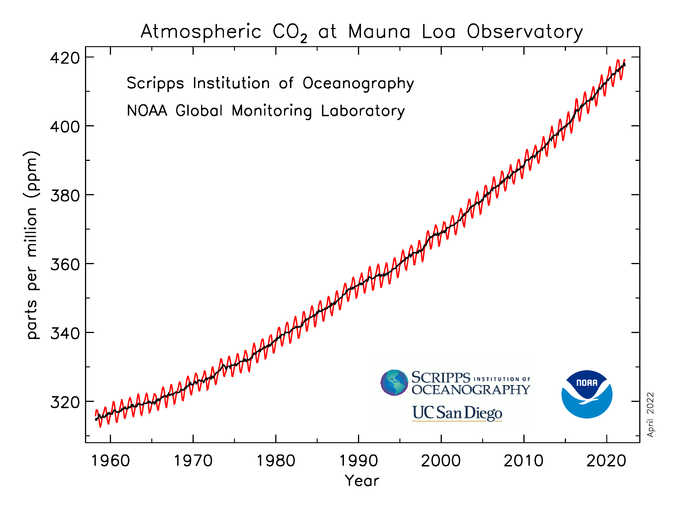
I recommend to take a look at The Keeling Curve site to explore interactively the different time ranges and see that the concentration of CO2 has exploded since the industrial revolution in 1850. For those who prefer to learn through videos, here is a great official one minute video from the Scripps Oceanography Institute: The Keeling Curve Hits 415 PPM video
I strongly want to hammer on the fact that the current CO2 concentration has nothing to do with a natural variability as you can see on the following graph.
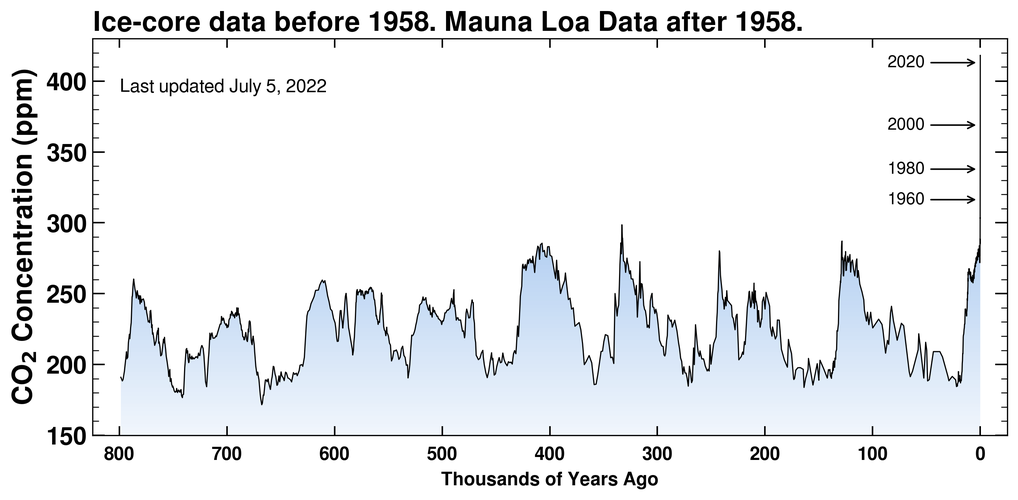
For those wondering, we are able to know the CO2 concentration from hundreds of thousands of years ago thanks to ice core samples. Actually, we can also estimate the global past temperature too : Here is a video from the movie Chasing Ice that explains the process quite simply.
-
1963
Keeling Report
Keeling Report
Connecting the dots : CO2 rise implies global temperature rise
Keeling’s curve was rising year by year through the 1960s. In 1963, Keeling and a few other experts met at a conference sponsored by the private Conservation Foundation and issued a report suggesting that the doubling of CO2 projected for the next century could raise the world’s temperature by 3.8 Fahrenheit or 2.1°C.
"It is estimated that a doubling of the carbon dioxide content of the atmosphere would produce an average atmospheric temperature rise of 3.8 degrees Fahrenheit. [...] So far, the increase of carbon dioxide has been of the order of 10 percent, and the oceans are already experiencing some rise of temperature."
—Noel Eichhorn associate of the Conservation Foundation, Implications of rising carbon dioxide content of the atmosphere, March 1963, page 5/28, 2nd paragraph When they published this report back in 1963, there was an atmospheric C02 concentration of around 320 p.p.m. The report tells us that for 640 p.p.m we would reach an atmospheric temperature rise of 2.1°C. However, our scientific knowledge has evolved and we now know that 450 p.p.m most likely corresponds to 2.1°C and that 650 p.p.m most likely corresponds to 3.6°C. These estimations come from the IPCC Fourth Assessment Report, Working Group 1 - AR4 WG1 The Physical Science Basis, page 66/1007, tableau TS.5 .
-
1969
United Nations 1st Warning
United Nations 1st Warning
His thoughts about the systemic concern
"I do not wish to seem overdramatic, but I can only conclude from the information that is available to me as Secretary-General, that the Members of the United Nations have perhaps ten years left in which to subordinate their ancient quarrels and launch a global partnership to curb the arms race, to improve the human environment, to defuse the population explosion, and to supply the required momentum to development efforts. If such a global partnership is not forged within the next decade, then I very much fear that the problems I have mentioned will have reached such staggering proportions that they will be beyond our capacity to control."
—U Thant Ex Secretary-General of the UN, Extracts from statements of Sessions of the UN General Assembly, May 1969 at page 8/47 -
1970
First Earth Day
First Earth Day
Emergence of environmental consciousness
April 22nd 1970, the first Earth Day is celebrated; the environmental movement attains strong influence, spreads concern about global degradation. An estimated 20 million people nationwide attended the inaugural events at tens of thousands of sites including elementary and secondary schools, universities, and community sites across the United States.
In 1970, the U.S. National Oceanic and Atmospheric Administration , the world’s leading funder of climate research, is created.
-
1972
Only One Earth
Only One Earth
A classic in ecological literature
The book was originally an ordered report for the Stockholm conference that occurred the year of its publication. The report already mentions the main concerns we are facing now : malnutrition, ocean acidification and more. Surprisingly, the 2°C global warming threshold already appears in this old report.
"The equilibrium between incoming and outgoing radiation, the forces that preserve the global temperature seem so delicate, so precise, that a slight change in the energy equilibrium could disturb everything. Only a slight change can modify the global temperature to 2°C. 2°C less and it is a new ice age ; 2°C more and it is an age without ice. In both cases, the consequences are global and catastrophic."
—Ward and Dubos, Only One Earth, 1972 -
March 1972
The Limits To Growth
The Limits To Growth
Prediction of a Collapse of our Societies
This unmissable book - it really is a must-read - is a report of a two year study by the Massachusetts Institute of Technology (MIT) from 1970 to 1972. The project team used system dynamics theory and computer modeling to analyze, via a computer model named World3 , the long-term causes and consequences of growth in the world’s population and material economy. Their conclusions are unpleasant but must be read carefully:
"If the present growths trends in world population, industrialization, pollution, food production, and resource depletion continue unchanged, the limits to growths on this planet will be reached sometime within the next 100 years. The most probable result will be a rather sudden and uncontrolled decline in both populaton and industrial capacity."
—Meadows & Randers, The Limits to Growth, 1972 Here is a graph of a standard run of the World3 model:
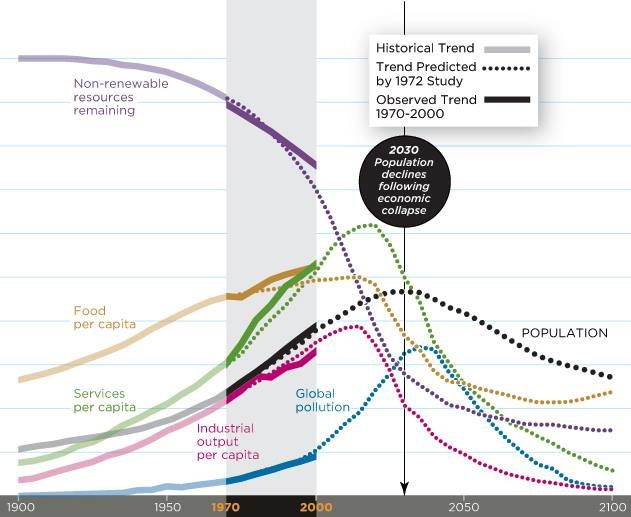
Even though the book contains mainly the model’s result based on different scenarios and their analysis, it contains some wise advice and tools. I would like to share one extract with you:
"The depths of human ignorance are much more profound than most of us are willing to admit. [...] The world's leader do not know any better than anyone else how to bring about a sustainable society; most of them don't even know it's necessary to do so."
—Meadows & Randers, The Limits to Growth, 1972 -
June 1972
Stockholm Conference
Stockholm Conference
Exposing environmental issues on the international scene
The Stockholm Conference is the first world conference on the environment. The UN was dedicated to make the environment a major issue.
One of the major results of the Stockholm conference was the creation of the United Nations Environmental Programme (UNEP) which is responsible for coordinating responses to environmental issues within the United Nations system.
-
1974
International Energy Agency
International Energy Agency
Essential reports on Energy
The International Energy Agency (IEA) created in 1974 is well-known for its annual high quality reports on the question of energy called World Energy Outlook . The IEA provides an expertise to nations to help them formulate their energy policies and helps to frame the energy debate on a global scale.
Even though the World Energy Outlook are unmissable reports, I can only encourage you to take a look at different sources such as:
-
Statistical Review of World Energy - British Petroleum
-
Shell Energy Scenarios - Shell
-
World Energy Report - RWE
-
Energies - Total
-
Energy [r]evolution - Greenpeace
Beware, most estimations in those reports are optimistic since most statistics come from private companies and the governments of oil producing countries that have no interest that the international community introduces measures for energy consumption reduction.
-
-
1987
Brundtland Report
Brundtland Report
A famous report on Sustainable Development
The Bruntland Report also known for its title Our Common Future, is an ordered report by the United Nations on the subject of Sustainable Development.
"It was an urgent call by the General Assembly of the United Nations to propose long-term environmental strategies for achieving sustainable development by the year 2000 and beyond. [...] The Earth is one but the world is not. [...] A sustainable society is one that meets the need of the present without compromising the ability of future generations to meet their own needs."
—Gro Harlem Brundtland, Brundtland Report, 1987 “The Earth is one but the world is not”, this sentence is famous for its crucial meaning : regarding environmental and social issues that do not limit themselves to frontiers, political institutions are ineffective, because they depend on nation states.
For those wondering what sustainable development means and implies, I would like to introduce Herman Daly, a co-nominee for the Peace Prize due to his revelation that the current economic system is leading to ecological collapse. He is emeritus professor at the University of Maryland’s School of Public Policy. He was Senior Economist in the Environment Department of the World Bank too. He had a major impact on the world by identifying indicators that are essential for a sustainable human society that are well known as Herman Daly’s Three Rules :
-
Sustainable use of renewable resources means that the pace should not be faster than the rate at which they regenerate.
-
Sustainable use of non-renewable resources means that the pace should not be faster than the rate at which their renewable substitutes can be put in place.
-
Sustainable rate of emission for pollution and and wastes means that it should not be faster than the pace at which natural systems can absorb them, recycle them, or render them harmless.
-
-
1988
Intergovernmental Panel on Climate Change
Intergovernmental Panel on Climate Change
Ensuring access to scientific knowledge on climate change
The Intergovernmental Panel on Climate Change (IPCC) is an organization that provides objective and comprehensive scientific information on anthropogenic climate change, including the natural, political, and economic impacts and risks, and possible response options. It does not conduct original research nor monitor climate change, but rather undertakes a periodic, systematic review of all relevant published literature. Thousands of scientists and other experts volunteer to review the data and compile key findings into “Assessment Reports” for policymakers and the general public.
The IPCC was established in 1988 by the World Meteorological Organization (WMO) and the United Nations Environment Programme (UNEP). It publishes assessment report around every 5 years and has published six assessment reports so far. Visit the IPCC Website to download and read their reports.
In 2007, the organization received the Nobel Peace Prize shared with Al Gore for their efforts to build up and disseminate greater knowledge about man-made climate change, and to lay the foundations for the measures that are needed to counteract such change. Please note that the organization only have around 6 millions dollars budget per year.
-
1992
Rio de Janeiro Earth Summit
Rio de Janeiro Earth Summit
The beginning of the Climate Regime
The United Nations Conference on Environment and Development (UNCED), also called the Earth Summit, is really important: 172 governments are represented, 117 heads of state are present and around 2400 NGO leaders are there too.
The conference addressed global issues such as fossil fuels, climate change, public transportation and more. At the end of the event various conventions and policies are produced like the Agenda 21 . The most important one is the Climate Change Convention (also called the United Nations Framework Convention on Climate Change or UNFCCC for short). This Convention was adopted the March 21st 1994 when 50 countries signed the convention. Even though the Convention does not include any objectives it ensures that governments gather every year to discuss Anthropocene issues in Conferences Of Parties (COP).
-
March 1995
2°C limit origin
2°C limit origin
Knowing where this limit comes from
To put it simply, the 2°C objective comes from a scientific-political coproduction with some major actors like the IPCC and the German Advisory Council on Climate Change (WBGU), an independent scientific advisory body established in the 1992 in the run-up to Rio Earth Summit.
In 1995, the WBGU proposed a logical and simple approach to determine the threshold that we should never pass. The WBGU claims that the temperature window should not exceed the temperature where biological and human life has been developped on Earth for the past 120000 years.
"The first principle, preservation of Creation in its present form, is presented within this scenario in the form of a tolerable “temperature window”. This window is derived from the range of fluctuation for the Earth’s mean temperature in the late Quarternary period. This geological epoch has shaped our present-day environment, with the lowest temperatures occurring in the last ice age (mean minimum around 10.4 °C) and the highest temperatures during the last interglacial period (mean maximum around 16.1 °C). If this temperature range is exceeded in either direction, dramatic changes in the composition and function of today’s ecosystems can be expected. If we extend the tolerance range by a further 0.5 °C at either end, then the tolerable temperature window extends from 9.9 °C to 16.6 °C. Today’s global mean temperature is around 15.3 °C, which means that the temperature span to the tolerable maximum is currently only 1.3 °C."
—WBGU, Scenario for the derivation of global CO2 reduction targets and implementation strategies, page 12/45, March 1995 The 1.3°C degree maximum increase value combined with the 0.6°C global warming already observed in 1995 gives us the 2°C limit.
-
April 1995
Berlin Conference COP1
Berlin Conference COP1
The first Conference Of Parties
In 1995, the first COP took place in Berlin where 120 governments were represented. Even though the first IPCC report was released in 1990 and announced a possible 3°C global warming in 2050 compared to the pre-industrial era, the scientific alarm is not really taken seriously. The conference did not end with concrete measures.
-
1997
Discovery of the Plastic Ocean
Discovery of the Plastic Ocean
Discovery of the 7th continent
In 1997, Captain Charles Moore discovered the Great Pacific Garbage Patch (GPGP)– a whirlpool of plastic debris in the Pacific Ocean. This is the biggest accumulation of plastic in a ocean gyre. It extends over 3 millions km2 or 6 times the area of France.
Plastic we create unfortunately ends up in the ocean. According to a WWF report , between 86-150 million metric tonnes (MMT) of plastic have accumulated in the oceans in 2022, at a continuously increasing rate: in 2010, 4.8-12.7 MMT of plastic waste pollution were estimated to enter the ocean from land, while a more recent study suggests that 19-23 MMT entered our waterways in 2016. 80 percent of plastic in the ocean is estimated to come from land-based sources, with the remaining 20 percent coming from boats and other marine sources. This plastic accumulates in five ocean gyres. All five have an increased concentration of plastic waste compared to other parts of the oceans.
The vast majority of these plastic particles can barely be seen with the naked eye because they are microplastics (smaller than five millimeters). The gyres, however, do not feature floating islands of plastic, also called garbage patches. There is no visible floating mass of plastic waste in the middle of the ocean. Such misunderstandings persist, but pollution in the gyres is really an increased concentration of plastic that is, for the most part, in very small pieces.
We estimate that 100000 marine animals and one million seabirds die each year by ocean plastic ingestion or entanglement.
-
Dec. 1997
Kyoto Protocol
Kyoto Protocol
The first real but narrow objectives are set
The third COP took place in Kyoto in Japan in 1997 and concluded with the elaboration of the Kyoto Protocol. The Protocol was opened for signatures in 1998 and came into effect in 2005 after 175 governments signed it - but not the United States which represented 36% of global emission in 1990. The Protocol specifies the 1992 Framework Convention by assigning real emission reduction objectives for each signatory nation to reach before 2012 but without sanction mechanisms.
In parallel, the Kyoto Protocol proposes a European bubble mechanism plus three flexible mechanisms to facilitate the emission reduction objectives:
-
European Bubble: European countries must reduce their emissions by 8%, however if a country is having difficulties to reduce their emissions, it is fine as long as another European country counterbalances by reducing their emissions more. This can be seen as a great group mechanism but it does not motivate each country to reduce their own emissions.
-
Joint Implementation (JI)
-
Emission Trading (ET): it allows purchase and selling of emissions quotas between countries.
These mechanisms can be criticised; they turn the real concern which is the future of humanity, more generally the life condition of living creatures and the habitability condition on Earth into a new economic shape called The Economization of Environment. This was denounced by NGOs and organizations.
Was the Kyoto Protocol a success in the end ? This Nature article provides an answer :
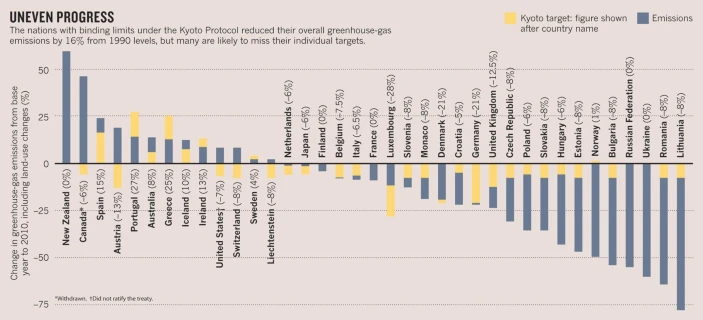
The result seems ok nonetheless, on a global scale, the Kyoto Protocol is not a success: global emissions have never stopped rising.
It was supposed to be the premice for real and stronger objectives but it proves to be already too difficult for governments to respect - see the Canada's withdrawal from the Kyoto Protocol .
"Kyoto had a very limited impact on climate. It was too narrow in ambition, its tools were too massively bureaucratic and it offered too many loopholes."
—Atte Korhola environmental-policy researcher at the University of Helsinki, Nature article, The Kyoto Protocol: Hot air, page 12/45, November 2012 -
-
2005
Montreal COP11 / MOP1
Montreal COP11 / MOP1
The first Meeting Of Parties (MOP)
The 2005 United Nations Climate Change Conference took place between November 28 and December 9, 2005, in Montreal, Quebec, Canada. The conference included the COP11, and was the first Meeting of the Parties (MOP1) to the Kyoto Protocol since their initial meeting in Kyoto in 1997.
The conference was one of the largest intergovernmental conferences on climate change ever. The event marked the entry into force of the Kyoto Protocol on 16 February 2005. Hosting more than 10,000 delegates, it was one of Canada’s largest international events ever and the largest gathering in Montreal since Expo 67.
-
May 2006
An Inconvenient Truth
An Inconvenient Truth
A documentary film to educate people about global warming
Al Gore was back then the Vice President of the United States when he wrote the film An Inconvenient Truth (see trailer) . Thanks to his work he obtained a Nobel Peace Prize in 2007 for drawing the world’s attention to the dangers of global warming which is the centerpiece in the film. I can not stress enough how much I recommend you to watch it.
The film shows brilliantly the link between the amount of CO2 in the atmosphere and the global temperature anomaly on Earth from thousands of years ago. The following graph is used in the documentary :
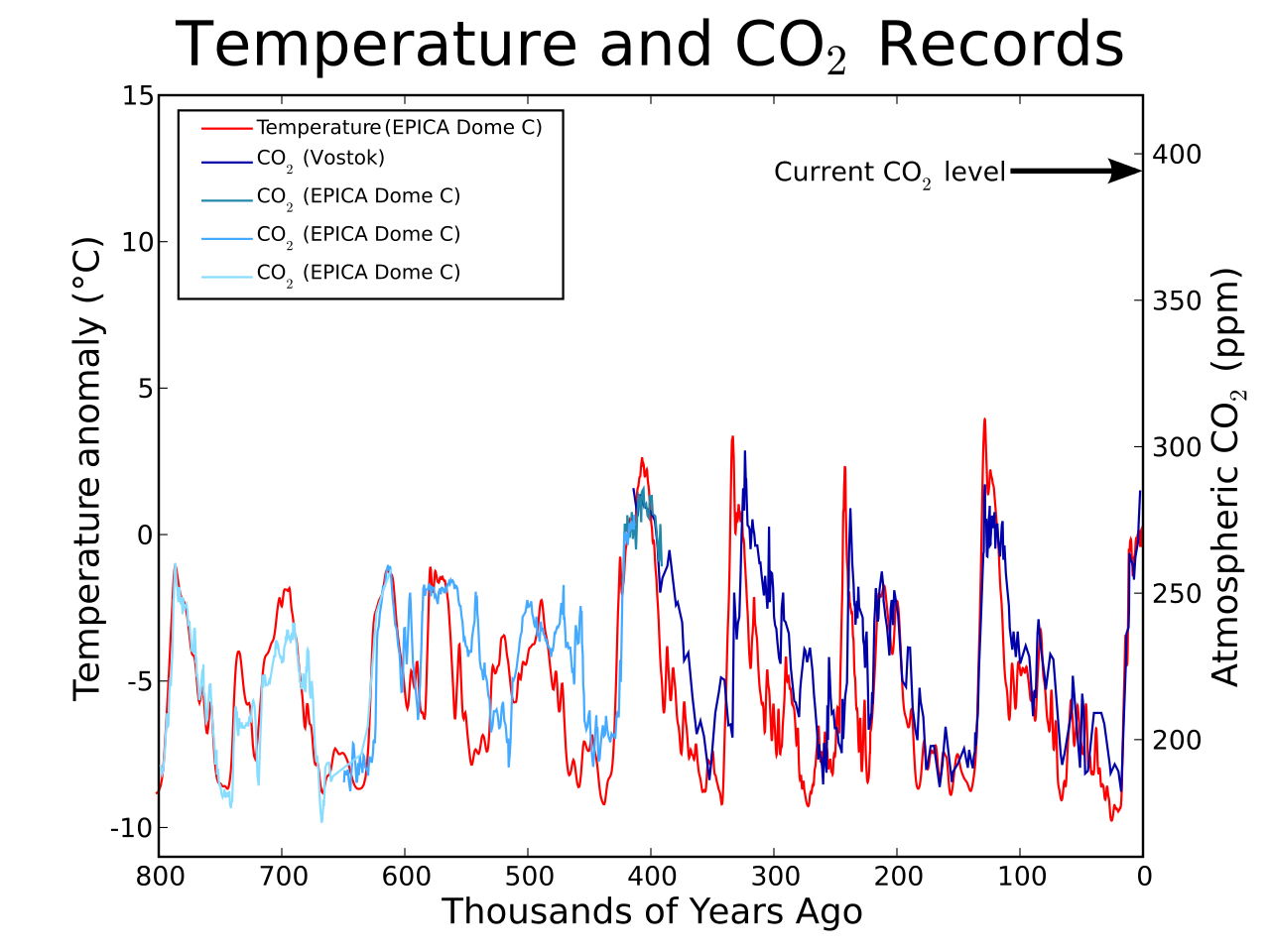
-
Oct. 2006
Stern Review
Stern Review
The Economics of Climate Change
Nicholas Stern, former vice-president of the World Bank Group, is a British doctor in economy and a member of various institutions such as the University of Oxford. In October 2006, he published a 662 pages report called the Stern Review: The Economics of Climate Change to the attention of the Prime Minister and the Chancellor of the Exchequer of the United Kingdom.
"There is still time to avoid the worst impacts of climate change, if we take strong action now."
—Nicholas Stern, Stern Review Report Summary of Conclusion, 2006 -
2007
The Eleventh Hour
The Eleventh Hour
A documentary film on the state of the Natural Environment
With contributions from over 50 politicians, scientists, and environmental activists, including former Soviet leader Mikhail Gorbachev, physicist Stephen Hawking, Nobel Prize winner Wangari Maathai, journalist Armand Betscher, and Paul Hawken, the film documents the serious problems facing the planet’s life systems. Global warming, deforestation, mass species extinction, and depletion of the oceans’ habitats are all addressed. The film’s premise is that the future of humanity is in jeopardy.
"Global warming is not only the number 1 environmental challenge we face today, but one of the most important issues facing all of humanity [...] We all have to do our part to raise awareness about global warming and the problems we as a people face in promoting a sustainable environmental future for our planet."
—Leonardo DiCaprio, quotes from his film The Eleventh Hour, 2007 -
2008
Peak of Conventional Crude Oil
Peak of Conventional Crude Oil
The End of Black Gold ?
According to the World Energy Outlook 2010 report at page 48, conventional crude oil production peaked in 2006, with an all-time maximum of 70 million barrels per day (mb/d). 2006 was refined to 2008 in the World Energy Outlook 2018 report at page 45: “Global conventional crude oil production peaked in 2008 at 69.5 mb/d and has since fallen by around 2.5 mb/d.”
"All the easy oil and gas in the world has pretty much been found. Now comes the harder work in finding and producing oil from more challenging environments and work areas."
—William J. Cummings Exxon-Mobil company spokesman, , December 2005 "It is pretty clear that there is not much chance of finding any significant quantity of new cheap oil. Any new or unconventional oil is going to be expensive."
—Lord Ron Oxburgh a former chairman of Shell, , October 2008 Nonetheless, we have not seen any impacts or changes since 2008; no crisis occured like in 1973. Why ? This can be explained because of the production of unconventional oil which have counterbalanced the fall of conventional crude oil production since then. For more details about Global Peak Oil, which consider all types of oil - conventional and unconventional - please check the timeline element named Global Peak Oil in October 2023, date of publication of the World Energy Outlook 2023 report.
-
2009
Copenhagen Summit COP15
Copenhagen Summit COP15
From Hopenhagen to Flopenhagen
There was hope before this conference. The event was even called Hopenhagen but it unfortunately turned into Flopenhagen. Indeed with the election of Barack Obama at the end of 2009, there was hope for the United States to reintegrate the Kyoto Protocol but it was not the case.
-
China became the first emitter of CO2 emissions in the world (China exceeded USA in 2004 to be precise) but is still defending itself by hammering on the historical responsability due to past emissions argument.
-
In its second report in 1995, IPCC mentioned that a 2°C global warming corresponds to 550 p.p.m. However in its fourth assessment report published in 2007, the IPCC reviewed their study and suggested that a 2°C global warming corresponds in fact to 450 p.p.m instead. The fact that the objective changed might have scared governments, plus in 2009 we had already reached 390 p.p.m.
-
The only result of this conference is a minimal document called the Copenhagen Accord signed by around 30 nations that represented 80% of global emissions to recognize that climate change is one of the most important challenge of our time and needs to be adressed with a strong political will to avoid passing the 2°C threshold. However, no quantified target or temporal policy is defined for the 2°C limit.
"Do not change the climate, change the system. [...] If the climate was a bank, it would already have been saved."
—Hugo Chavez back then President of Venezuela, Copenhagen Summit speech, 2009 -
-
2012
World Bank Report
World Bank Report
Turn Down the Heat
The report is called Turn Down the Heat: Why a 4°C Warmer World Must Be Avoided (available in English, French and Spanish). The funny fact is that it was written by an unexpected organization which we may consider as uninterested by the systemic crisis or even in part responsible of it: the World Bank. However, even their leaders realized that the crisis may be a problem for them. How surprising: a collapse of our societies implies no more financial needs.
"The World Bank is a leading advocate for ambitious action on climate change, not only because it is a moral imperative, but because it makes good economic sense. [...] A 4°C world can, and must, be avoided."
—Dr. Jim Yong President of the World Bank Group, Turn Down the Heat Report, 2012 -
March 2015
The Great Acceleration
The Great Acceleration
Exponentials everywhere
A report named Great Acceleration was originally published in 2004 to show socio-economic and Earth System trends from 1750 to 2000. In a 2015 report named The Trajectory of the Anthropocene: The Great Acceleration , graphs were updated to 2010.
Socio-Economic Trends
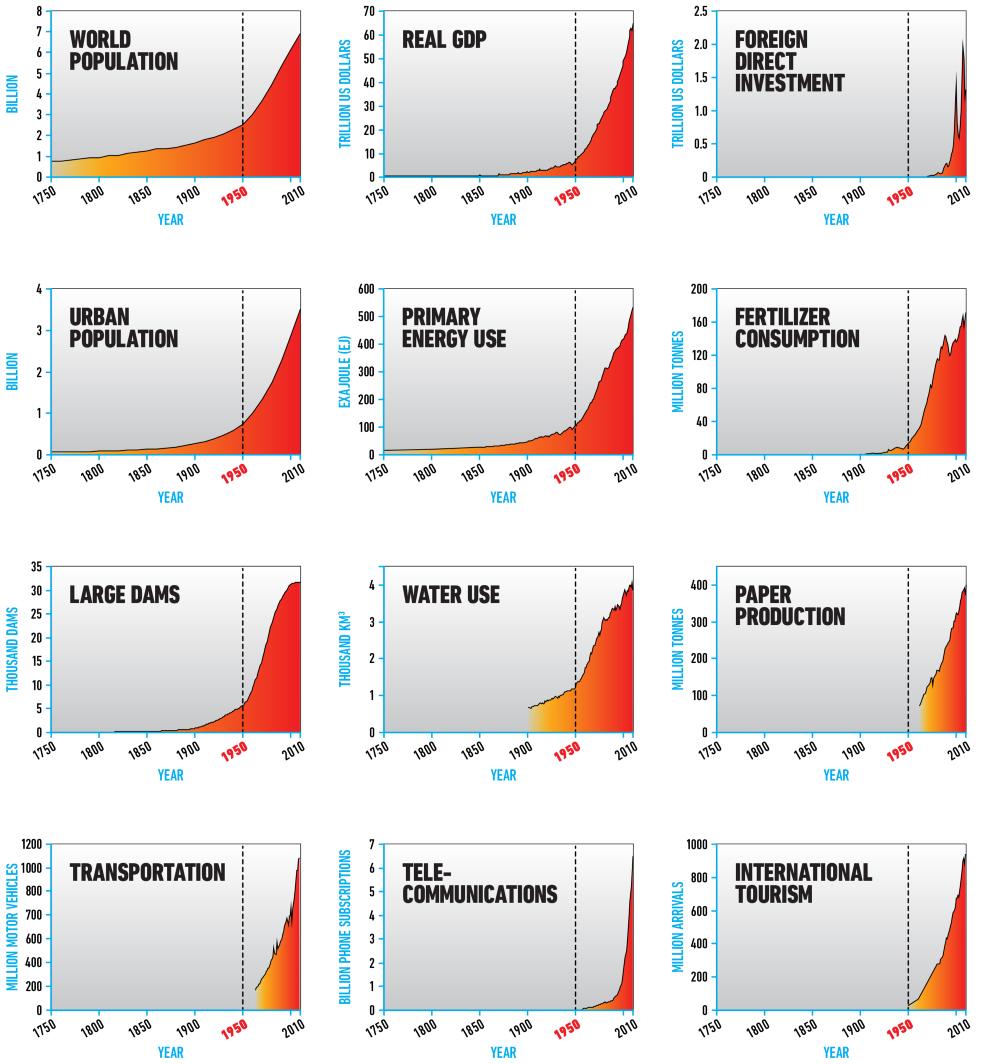
Earth System Trends
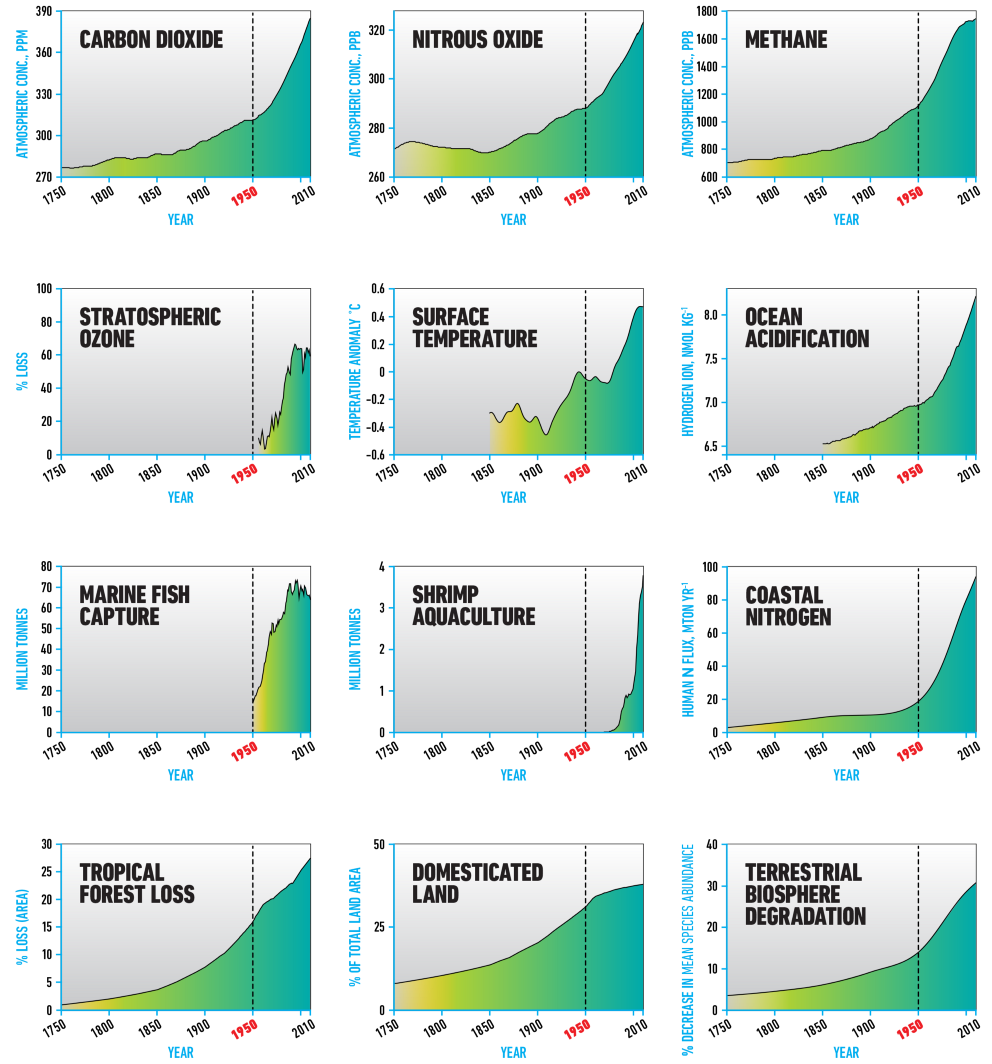
"Will the next 50 years bring the Great Decoupling or the Great Collapse? The latest 10 years of the Great Acceleration graphs show signs of both but cannot distinguish between these scenarios, or other possibilities. But 100 years on from the advent of the Great Acceleration, in 2050, we’ll almost certainly know the answer"
—, The Trajectory of the Anthropocene: The Great Acceleration, last paragraph, March 2015 -
Dec. 2015
Paris Agreement COP21
Paris Agreement COP21
Lots of joy and promises
Paris Agreement aims to reach zero net CO2 emissions by 2050: is it even possible ? Well let us be realistic for 5 seconds, if we consider a net zero emission by 2100 then (see graph from Our World in Data) :
-
In the Copenhagen Conference back in 2009, an analysis was made that indicates that in order not to reach 2°C we needed to have a 3% reduction of global emission of greenhouse gazes per year.
-
In 2013, a new analysis showed that to reach the same objective we needed to have a 5% reduction of global emission of grenhouse gazes per year.
-
In 2022, a quick calculation indicates that we need a 9% reduction per year for the exact same objective (check calculations below).
Unfortunately global emission have never decreased since 1850 (except during COVID19 crisis) and is still increasing exponentially.
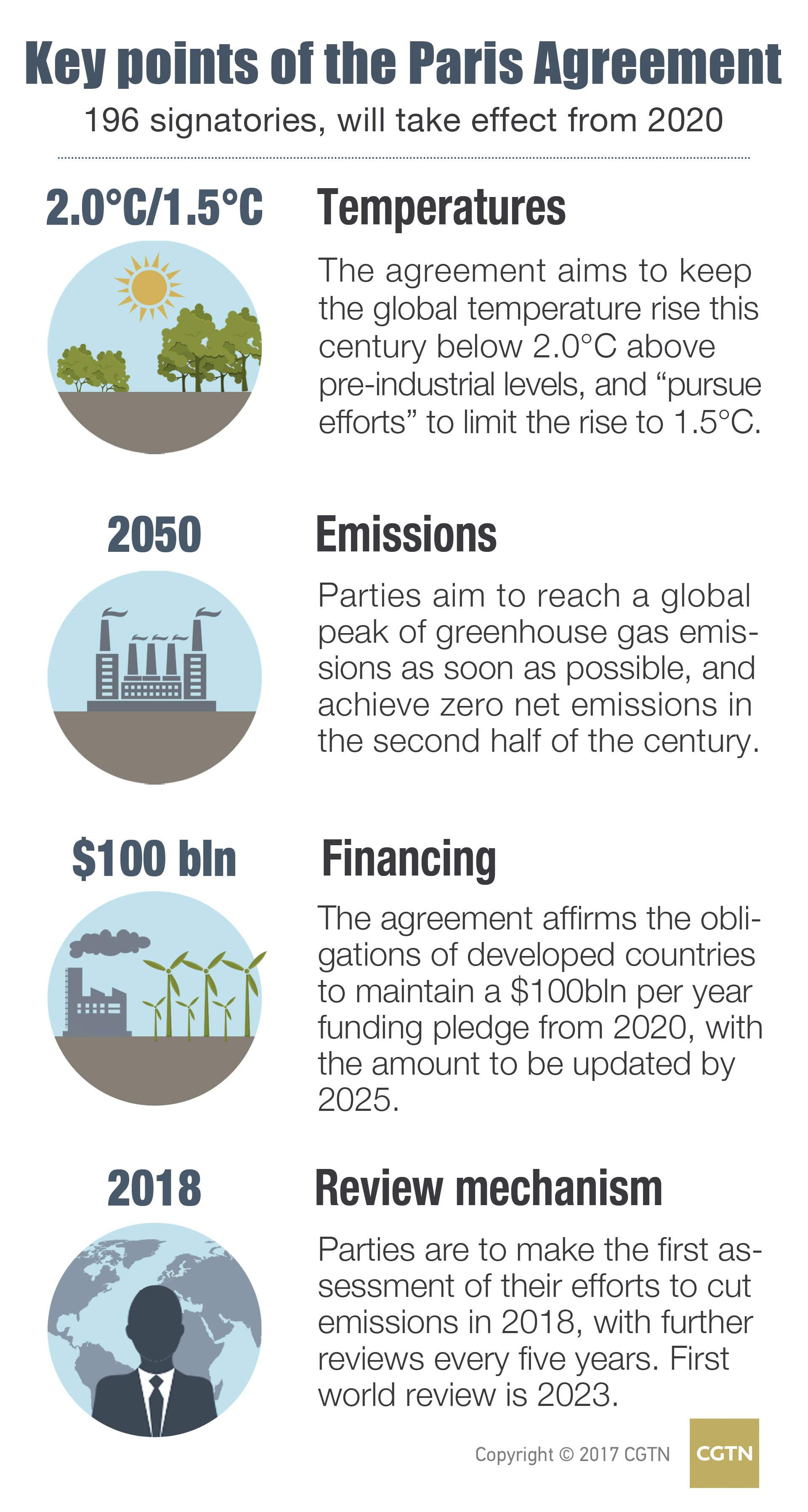
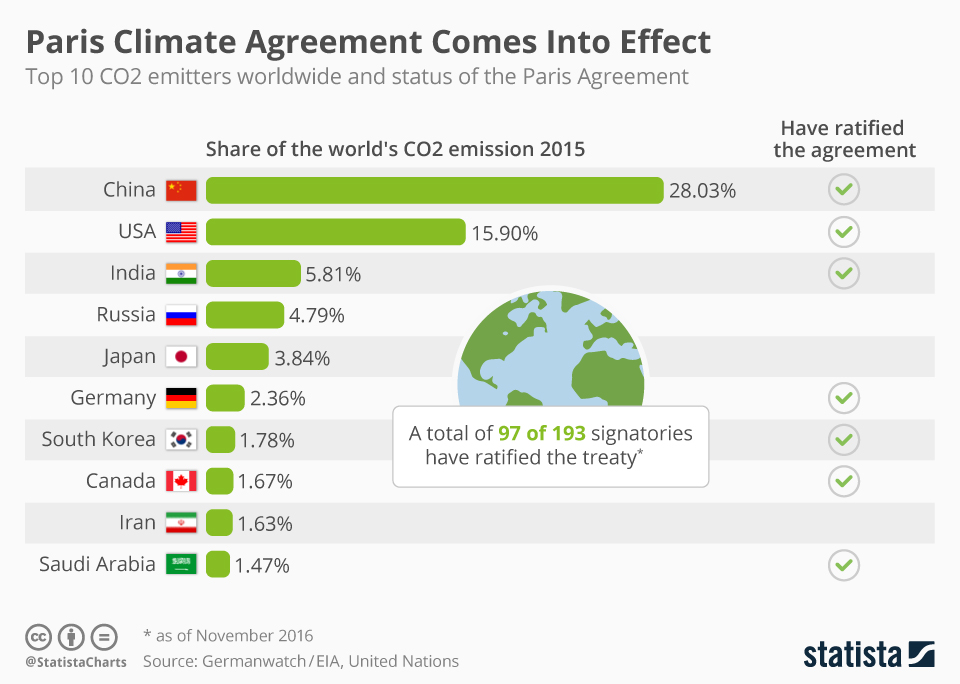
For those interested in the calculations :
`T_0 + \sum_{k=0}^{dy} \alpha * (1-p)^k = T_0 + \alpha * (1-(1-p)^(dy+1))/p < T_1``T_0 = 421`p.p.m is the current state in 2022`T_1 = 450`p.p.m which corresponds to a global warming of 2°C`\alpha = 2.5`p.p.m is the annual increase for our global emissions of 40Gt CO2 per year`dy = 2100 - 2022` is the number of years we consider`p` is the percentage to find -
-
Jan. 2016
More Plastic than Fish
More Plastic than Fish
An unconceivable and monumentally absurd idea
A report published in January 19, 2016 estimated that there will be more plastic than fish by weight by 2050. The UN President of the 73rd Session reacted in June 2019 :
"If we do nothing, by 2050, our world’s oceans will have more plastic in them than fish (by weight). I am going to repeat this, because it is an idea that appears monumentally absurd, but according to a report by the World Economic Forum and Ellen MacArthur Foundation, this is exactly the future we are headed toward: There will be more plastic than fish in the ocean in just over 30 years."
—María Fernanda Espinosa Garcés, President of the 73rd Session of the United Nations General Assembly, We Must Save Our World From Drowning in Plastic, Wednesday, June 5, 2019 Below is a diagram found on page 14 of the above-mentioned report, which gives us a schematic and straightforward description of the expected trends in plastics production in a business-as-usual scenario:
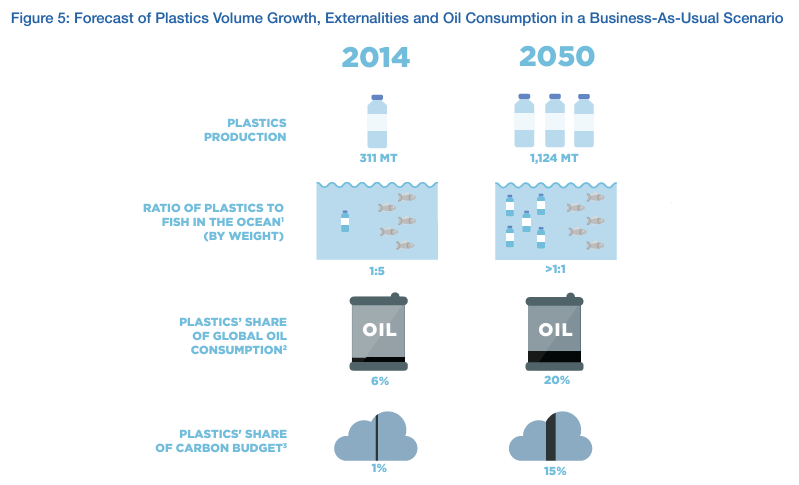
-
2017
Global Decline in Insects
Global Decline in Insects
Average decline of 76% in 27 years.
"Loss of insect diversity and abundance is expected to provoke cascading effects on food webs and to jeopardize ecosystem services. [...] Our analysis estimates a seasonal decline of 76%, and mid-summer decline of 82% in flying insect biomass over the 27 years of study. [...] 80% of wild plants are estimated to depend on insects for pollination, while 60% of birds rely on insects as a food source."
—, More than 75 percent decline over 27 years intotal flying insect biomass in protected areas, 2017 -
May 2018
Existential Threat to Humanity
Existential Threat to Humanity
Climate change is an existencial threat to humanity
The 15 May 2018, UN Secretary-General António Guterres delivered a message at the Austrian World Summit emphasizing that climate change is an existencial threat to humanity.
"If we fail to meet the challenge [of climate change], all our other challenges will just become greater and threaten to swallow us. Climate change is, quite simply, an existential threat for most life on the planet - including, and especially, the life of humankind."
—António Guterres UN Secretary-General, Austrian World Summit, 2018 -
Aug. 2018
French Environment Minister quits
French Environment Minister quits
He says: “I do not want to lie anymore”
Nicolas Hulot was the Environment Minister from May 2017 to Sept. 2018. Quiting was for him a way to protest. In his opinion, to prolong his mission would have been a synonym of resignation. Indeed, to prolong was like giving the illusion to people that we are going in the right direction.
"We think that ecology means just a subtle change ; no it is a real software change, a paradigm change. [...] We are at war against ourselves. What we need is a Marshall Plan. I do not want people to believe that with limited means, we will be able to solve such complex equations. [...] If there is not a shared vision at the highest level, if the diagnostic is not shared, the treatment will not be shared."
—Nicolas Hulot ex-French Environment Minister, Radio-Canada Info interview, January 2019 -
Oct. 2018
IPCC Report on 1.5°C Global Warming
IPCC Report on 1.5°C Global Warming
Special report
There are only 14 IPCC special reports currently. They are intended to specify some elements that could not have been made in other reports. IPCC considered it useful to publish a special report on the theme of Global Warming 1.5°C because they thought it could help understand that this threshold is already critical and to be avoided: Link to the special report .
Keeping the global temperature rise below 1.5°C is actually highly unlikely given the trend in C02 emissions since 1850 as shown in the following graph:
-
2020
Global Decline in Vertebrates
Global Decline in Vertebrates
Average decline of 68% in 46 years
"The global Living Planet Index (LPI) continues to decline. It shows an average 68% decrease in population sizes of mammals, birds, amphibians, reptiles and fish between 1970 and 2016. A 94% decline in the LPI for the tropical subregions of the Americas is the largest fall observed in any part of the world."
—Marco Lambertini Director General WWF International, WWF Living Planet Report 2020, first paragraph of the executive summary, 2020 -
Sept. 2020
Climate Refugees Estimations
Climate Refugees Estimations
Between 200 millions and 1.2 billion climate refugees by 2050
The Institute of Economics and Peace produces reports each year on different themes related to economics and peace. The ones we are particularly interested in are the Ecological Threat Reports - one was published in 2020 and another in 2021.
"6.4 billion people live in countries which are exposed to medium to high ecological threats. [...] An estimated 1.2 billion people are at risk of displacement by 2050."
—, IEP Ecological Threat Register, Key Findings section 1, September 2020 Other estimations are much smaller. A World Bank Group publication predicts around 200 millions climate refugees by 2050.
-
May 2021
IEA Roadmap
IEA Roadmap
Pathway to critical goal of net-zero emissions by 2050
"[...] the Roadmap sets out more than 400 milestones to guide the global journey to net zero by 2050. These include, from today, no investment in new fossil fuel supply projects, and no further final investment decisions for new unabated coal plants. By 2035, there are no sales of new internal combustion engine passenger cars, and by 2040, the global electricity sector has already reached net-zero emissions."
—, Pathway to critical and formidable goal of net-zero emissions by 2050 is narrow but brings huge benefits, according to IEA special report, article, May 2021 -
Sept. 2021
Air Pollution
Air Pollution
Air pollution contributes to 11.65% of deaths globally
The World Health Organization (WHO) published two fact sheets in 2021 that present the latest data:
- WHO – Fact sheet: Ambient (outdoor) air pollution
- WHO – Fact sheet: Household (indoor) air pollution and health
According to estimates, air pollution kills 7 millions people each year and is one of the leading risk factors for death. In low-income countries, it is often very near the top of the list (or is the leading risk factor).
Let us compare air pollution with some other main sources of mortality based on WHO estimates: high blood pressure causes 11 millions deaths each year, smoking 7.7 millions deaths, obesity 2.8 millions deaths, road accident 1.3 millions deaths, AIDS 680000 deaths, homicides 470000 deaths, wars 50000 and terrorism on average 25000 deaths.
Terrorism often dominates media coverage. We are informed about attacks as soon as they happen and many attacks claim the headlines. Close to 56 million people died in 2017; just over 26,000 of them from terrorism. Every 2000th death – 0.05% – were from terrorism.
-
March 2022
Climate Spiral
Climate Spiral
NASA Visualization of Global Temperature Evolution
This visualization shows monthly global temperature anomalies (changes from an average) between the years 1880 and 2021. Whites and blues indicate cooler temperatures, while oranges and reds show warmer temperatures. As you can see, global temperatures have warmed from mainly human activities as time has progressed.
These temperatures are based on data from NASA’s Goddard Institute for Space Studies (GISS). Anomalies are defined relative to a base period of 1951 to 1980.
In order to see more videos of the same kind but on other data, you can take a look at this site: Climate Lab Book .
-
April 2022
Earth Day
Earth Day
The UN Secretary-General says that governments are lying to us
"We are on a pathway to global warming of more than double the 1.5-degree limit agreed in Paris. Some government and business leaders are saying one thing – but doing another. Simply put, they are lying. And the results will be catastrophic. This is a climate emergency. [...] Climate activists are sometimes depicted as dangerous radicals. But the truly dangerous radicals are the countries that are increasing the production of fossil fuels. Investing in new fossil fuels infrastructure is moral and economic madness."
—António Guterres UN Secretary-General, video message, 4 April 2022 -
April 4th 2022 - UN climate report - The United Nation says: It’s ‘now or never’ to limit global warming to 1.5 degrees
-
April 22nd 2022 - Self-immolation of Wynn Bruce on Earth Day to bring attention to climate crisis.
-
-
May 2022
Carbon Bombs
Carbon Bombs
425 Carbon Bombs worldwide
"We have mapped the biggest fossil fuel projects worldwide, 425 carbon bombs, with a CO2 emissions potential exceeding 1 Gigaton in each project. The potential emissions from these projects exceed the 1.5 °C carbon budget by a factor of two. We showed that there is a high concentration of these projects in countries that have so far received little attention by those looking at the supply side of climate change mitigation: China, Middle Eastern countries and Russia. This is a major gap in mitigation policy and urgently needs to be addressed."
—Kjell Kühne, Nils Bartsch, Ryan Driskell Tate, Julia Higson and André Habet, conclusion of the research paper “Carbon Bombs” - Mapping key fossil fuel projects, 23 May 2022 For more information and insights, the website carbonbombs.org gathers all the information relative to the 425 Carbon Bombs. There, you will be able to visualize where these Carbon Bombs are located on the world map and examine some graphics to better understand the diversity of actors (banks, insurances, energy companies) that threaten the habitability conditions of our planet.
- Operating
- Not started
- Stopped
- Carbon Budget
-
Sept. 2023
Planet Boundaries
Planet Boundaries
9 boundaries accessed, 6 crossed
The planetary boundaries concept appeared in 2009. It presents a set of nine planetary boundaries within which humanity can continue to develop and thrive for generations to come. In September 2023, a team of scientists quantified, for the first time, all nine processes that regulate the stability and resilience of the Earth system. Over the 9 boundaries accessed, 6 are found to be crossed. For more information, visit the website stockholmesresilience.org or read the 2023 scientific paper Earth beyond six of nine planetary boundaries .
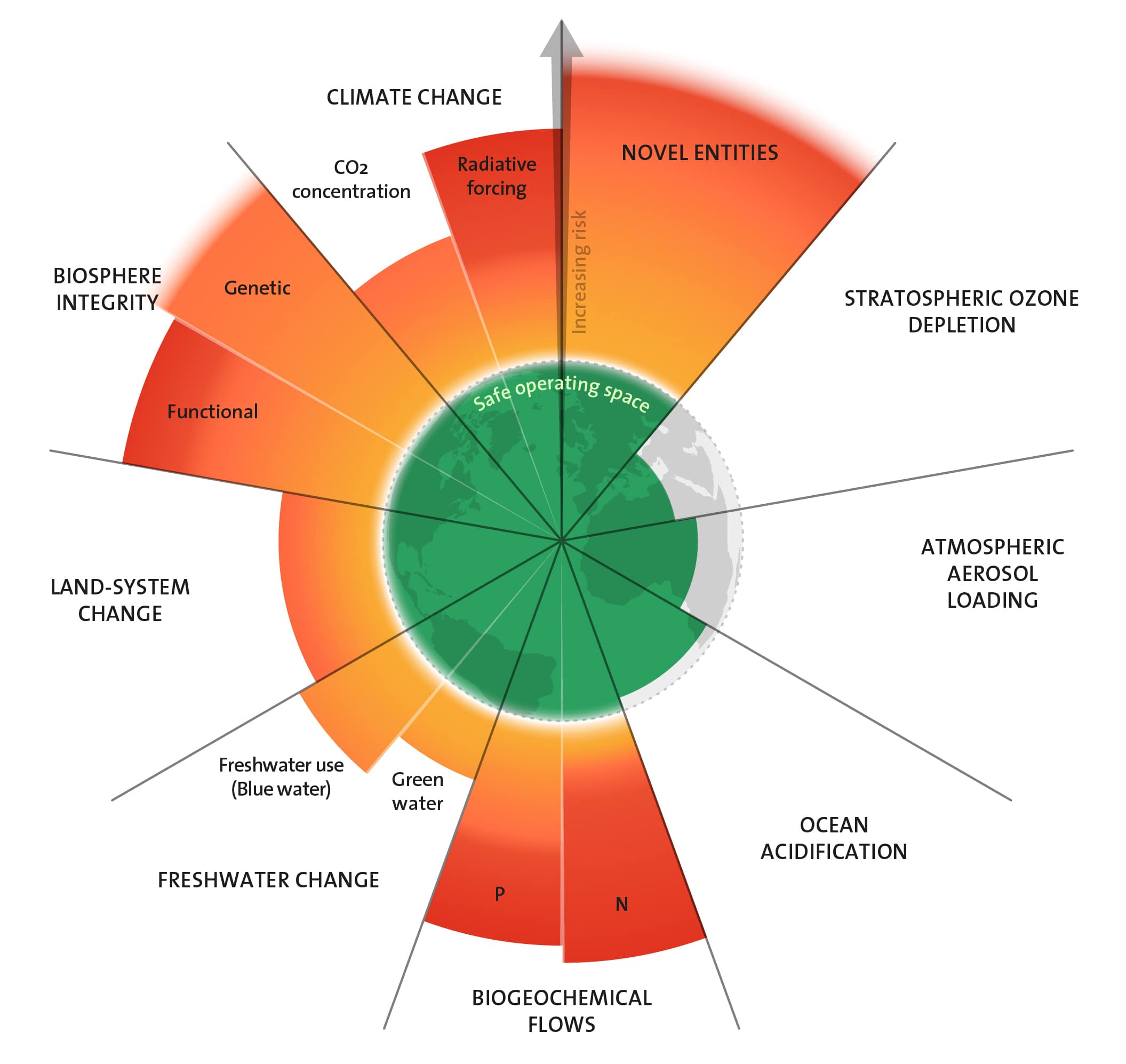
-
Oct. 2023
Global Peak Oil
Global Peak Oil
The Decline of Black Gold around 2030
We have seen that according to the World Energy Outlook 2018 report at page 45: “Global conventional crude oil production peaked in 2008 at 69.5 million barrils per day (mb/d) and has since fallen by around 2.5 mb/d”. Nonetheless, we have not seen any impacts or changes since 2008; no crisis occured like in 1973. Why ? This can be explained because of the production of unconventional oil which have counterbalanced the fall of conventional crude oil production since then. Let’s see the difference between conventional and unconventional oil:
-
Conventional crude oil is the first type of oil ever exploited. Petroleum (crude oil, conventional crude oil) is found in the microscopic pores of sedimentary rocks, such as sandstone and limestone.
-
Now what about the unconventional oil ? What are the different main types of unconventional oil ?
- fracking oil, or more exactly hydrofracking also known as tight oil or shale oil
- tar sand, also known as oil sand, bituminous sand which is a type of heavy oil or extra-heavy oil
- deep sea oil, or offshore in the ocean and in the Arctic
- agrofuels, also called biofuel
- natural gas liquids (NGLs)
The Global Peak Oil is predicted to occur around 2030 according to the World Energy Outlook 2023 at page 133 (see figure 3.21). It is defined as the hypothetical point in time when the global production of oil - all types confounded - reaches its maximum rate, after which production will gradually decline.
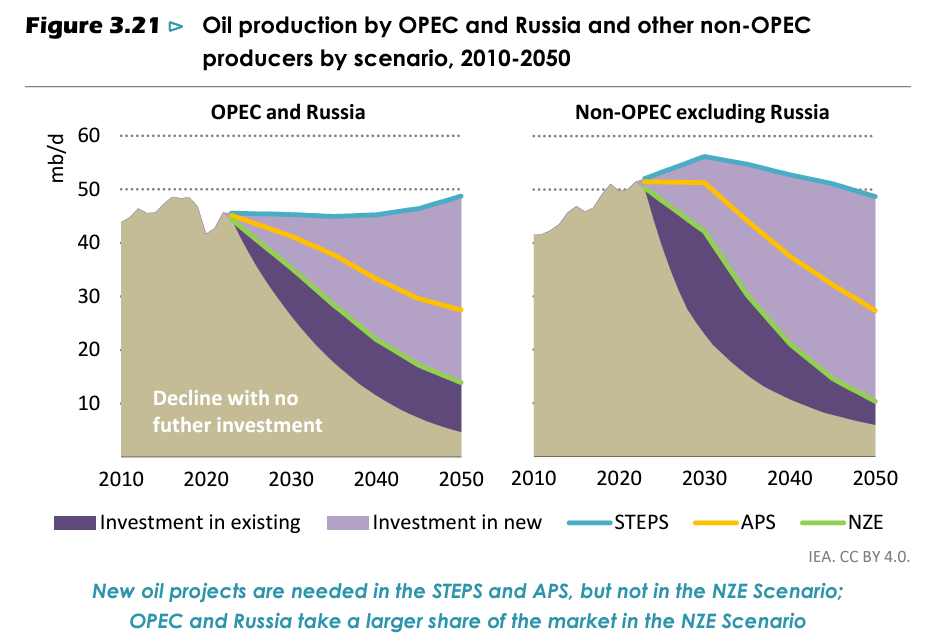
Here is the description of the three different scenarios given by the World Energy Outlook 2023 at page 17:
- The Stated Policies Scenario (STEPS): provides an outlook based on the latest policy settings, including energy, climate and related industrial policies.
- The Announced Pledges Scenario (APS): assumes all national energy and climate targets made by governments are met in full and on time.
- The Net Zero Emissions by 2050 Scenario (NZE): scenario required to meet the objectives to limit global warming to 1.5 °C.
These numbers confirm the vision of the CEO of Total back in 2020:
"In 2050, when we speak about carbon neutrality in the second half of the century (reference to the Net Zero Emission or NZE scenario by 2050), we think that we’ll have something like 40 million barrils of oil per day (mb/d), but it’s not zero. It is much less than 100 million per day which is the current consumption. Clearly we will face a peak in oil production around 2030-2040, which will begin to decline."
—Patrick Pouyanné CEO of Total, Nature article, ONS Digital Conference, 31 August 2020 -
-
Dec. 2023
Dubai COP28
Dubai COP28
A Historic Deal
The 28th Conference of Parties was a scandal from the start for some people:
-
it was organized in Dubaï United Arab Emirates (UAE), the 7th oil productor in the world.
-
the president chosen for the 28th COP is the Sultan Al-Jaber; he is the Industry Minister of the UAE and the CEO of the Abu Dhabi National Oil Company (ADNOC). This company is aiming for a oil production capacity boost to 5 million b/d by 2030 from about 4 million b/d in 2022 (see also the International Trade Administration UAE Comercial Guide published in November 25, 2023) which is a 25% oil production increase even though the 28th UN Climate Change Conference mentions: World agrees to transition away from fossil fuels and reduce global emissions by 43% by 2030 .
-
lots of companies that are considered as big polluters, representants and lobbyists were present. It was estimated that 2456 lobbyists were present in the COP28 , which is significantly more than in the COP27 with an estimation of 636 lobbyists and 503 during the COP26.
According to the Sultan Al-Jaber, the president of the COP28, the final text is a success.
"It is an enhanced, balanced - but make no mistake - historic package to accelerate climate action."
—Sultan Al-Jaber, COP28 President, Cop28 president hails 'historic' deal to transition away from fossil fuels youtube video, December 2023 This deal is called “historic” because it mentions, for the first time in all UN climate conferences, the transitioning away from fossil fuels . However, it is not enough, many people expected the term of “phase out” or at least “phase down”.
"The promises, if they were all fulfilled, would imply a reduction in greenhouse gas emissions of around 5% by 2030, and those that are conditional only of 2%, whereas to limit global warming to well below 2°C, emissions would have to be reduced by 25%, or by 43% for 1.5°C. So we can also see a certain number of limits in this text. These limits are financing. Funding for the development of alternatives to fossil fuels, funding for adaptation with a global target that remains low, and funding for loss and damage to help the most vulnerable countries simply to rebuild post-disaster. For this, the $400 million on the table is equivalent to the annual salary of the three highest-paid footballers."
—Valérie Masson-Delmotte, french climate scientist, interview post-COP28, December 13, 2023 -
-
Jan. 2024
Warmest Years
Warmest Years
2023 is the warmest year since global records
2023 is officially the warmest year ever recorded. The National Oceanic and Atmospheric Administration (NOAA) makes it clear in its article Climate Change: Global Temperature published on January 18, 2024. The important highlights are the following: 2023 was the warmest year since global records began in 1850 by a wide margin and worst than that, the 10 warmest years in the historical record have all occurred in the past decade (2014-2023). You can find additional details by reading the NOAA 2023 Global Climate Report .
Other reliable sources inform about the same news. Copernicus, which is the European Union’s Earth Observation Programme and a leading provider of Earth observation data, produced an article named 2023 is the hottest year on record published on January 9, 2024. Here is an interesting highsight: 2023 was 0.60°C warmer than the 1991-2020 average and 1.48°C warmer than the 1850-1900 pre-industrial level, which is very close to the 1.5°C limit.
We can also site the World Meteorological Organization (WMO) with its article WMO confirms that 2023 smashes global temperature record published on January 12, 2024.
The state of the Earth becomes so critical and climate inaction so absurd that we have not enough strong words to describe what is happening and what is about to happen. The UN Secretary-General is contrained to employ new words in order to try to catch the world’s attention mentionning the “global boiling”.
"For scientists it is unequivocal humans are to blame. All of this is entirely consistent with predictions and repeated warnings. The only surprise is the speed of the change. The era of global warming has ended, the era of global boiling has arrived. The air is unbreathable, the heat is unbearable and the level of fossil fuel profits and climate inaction is unacceptable."
—António Guterres UN Secretary-General, video message, 27 July 2023 The following graph shows the Yearly Average Temperature Anomaly which is the difference between the average yearly global surface temperature and its pre-industrial baseline. The pre-industrial baseline is calculated as the average temperature from 1850 to 1900.
-
Now
What to do ?
What to do ?
Study, Share and Act
You can be a thinker, a maker, an instigator, an organiser or a facilitator (Arthur Keller - 2022).
The important thing it to stop denying. If we deeply understand we will act accordingly. Even though Naomi Klein is focused on climate change, this applies for the systemic concern:
A great many of us engage in this kind of climate change denial. We look for a split second and then we look away. Or we look but then turn it into a joke ("more signs of the Apocalypse!"). Which is another way of looking away.
Or we look but tell ourselves comforting stories about how humans are clever and will come up with a technological miracle that will safely suck the carbon out of the skies or magically turn down the heat of the sun. Which, I was to discover while researching this book, is yet another way of looking away.
Or we look but try to be hyper-rational about it ("dollar for dollar it's more efficient to focus on economic development than climate change, since wealth is the best protection from weather extremes") — as if having a few more dollars will make much difference when your city is underwater. Which is a way of looking away if you happen to be a policy wonk.
Or we look but tell ourselves we are too busy to care about something so distant and abstract — even though we saw the water in the subways in New York City, and the people on their rooftops in New Orleans, and know that no one is safe, the most vulnerable least of all. And though perfectly understandable, this too is a way of looking away.
Or we look but tell ourselves that all we can do is focus on ourselves. Meditate and shop at farmers' markets and stop driving — but forget trying to actually change the systems that are making the crisis inevitable because that's too much "bad energy" and it will never work. And at first it may appear as if we are looking, because many of these lifestyle changes are indeed part of the solution, but we still have one eye tightly shut.
Or maybe we do look — really look — but then, inevitably, we seem to forget. Remember and then forget again. Climate change is like that; it's hard to keep it in your head for very long. We engage in this odd form of on-again-off-again ecological amnesia for perfectly rational reasons. We deny because we fear that letting in the full reality of this crisis will change everything. And we are right.—Naomi Klein, This Changes Everything book introduction, 2014
Bibliography
Reading is a great way to get informed and involved in the systemic concern we must all face. It is not always easy to know where to start : here are some propositions.
“It is no measure of health to be well adjusted to a profoundly sick society.” - Jiddu Krishnamurti
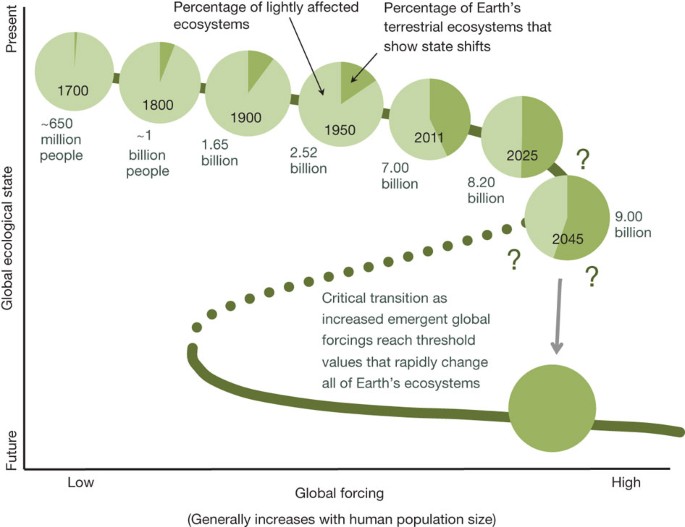
Approching a State Shift in Earth Biosphere
Nature - 2012
Review evidence that the Global Ecosystem is approaching a planetary-scale critical transition as a result of human influence
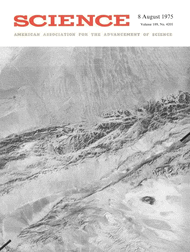
Are we on the brink of a pronunced Global Warming
Science - 1975
An old Science report that predicted the temperature rise levels for years to come back in 1975. Its predictions are correct and it further explores what may go wrong in the case of a pronunced global warming.
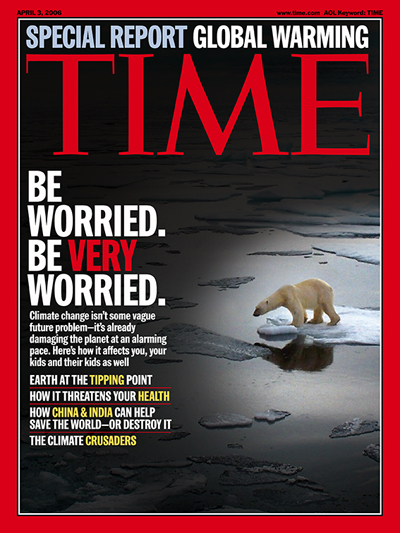
Be Worried. Be Very Worried.
Time Magazine - 2006
Earth at the Tipping Point: Global Warming Heats Up

Deux Degrés
Edwin Zaccai - 2019
Another book on the climate change subject: it does not provide more information if you are already informed. It nonetheless offers a different point of view about it.

Devant l'Effondrement
Yves Cochet - 2019
A hard-to-read book because of the conclusion it suggests : a collapse of our society probably in 2020 and certain before 2030.
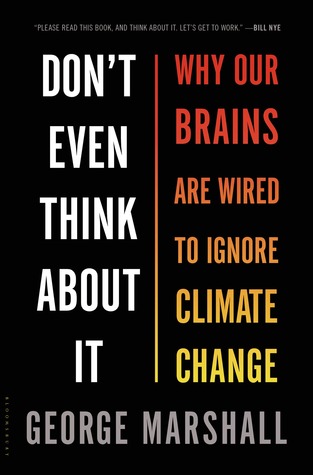
Don't even think about it
George Marshall - 2014
A psychological approach to the question : why don’t we care about climate change ?
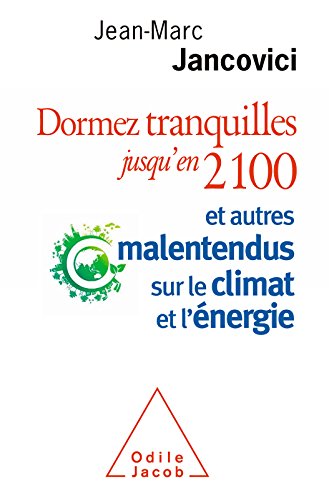
Dormez tranquilles jusqu'en 2100
Jean-Marc Jancovici - 2015
A book har to read in my opinion as it goes in all directions, left and right, with a confusing structure. I would better recommend Jean-Marc Jancovici’s conferences (available on Youtube for example): he is clearer orally.
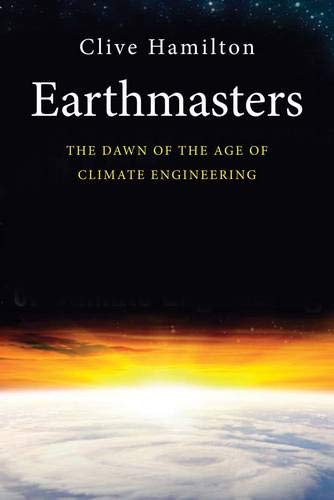
Earthmasters
Clive Hamilton - 2013
Deconstruction of the myth of geo-engineering solutions and explains how some people want to play god with the climate.
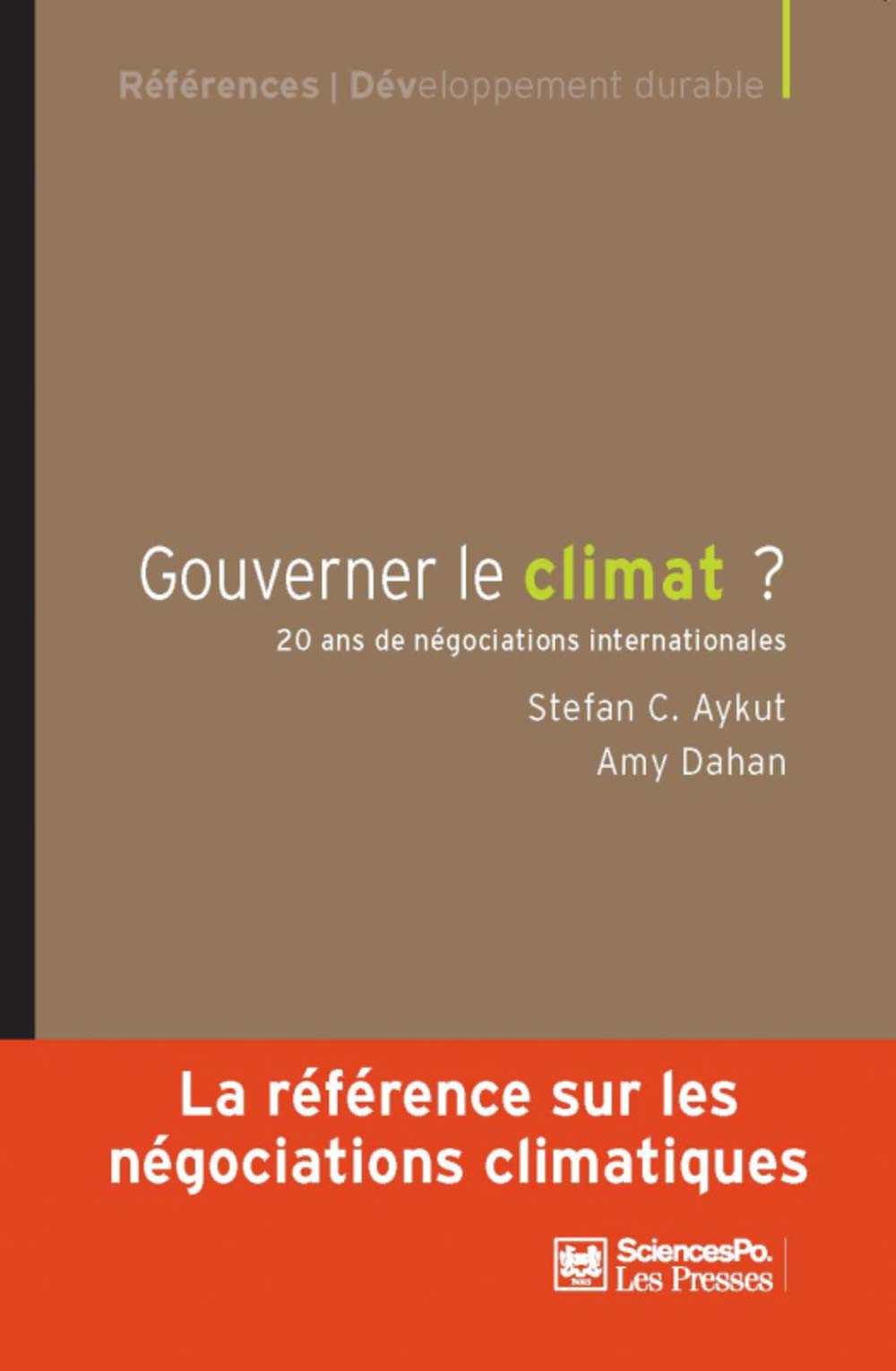
Gouverner le Climat
Stefan C. Aykut & Amy Dahan - 2014
This is a great book that goes through the history of all the international conferences about climate change and shows how and why things have not evolved.
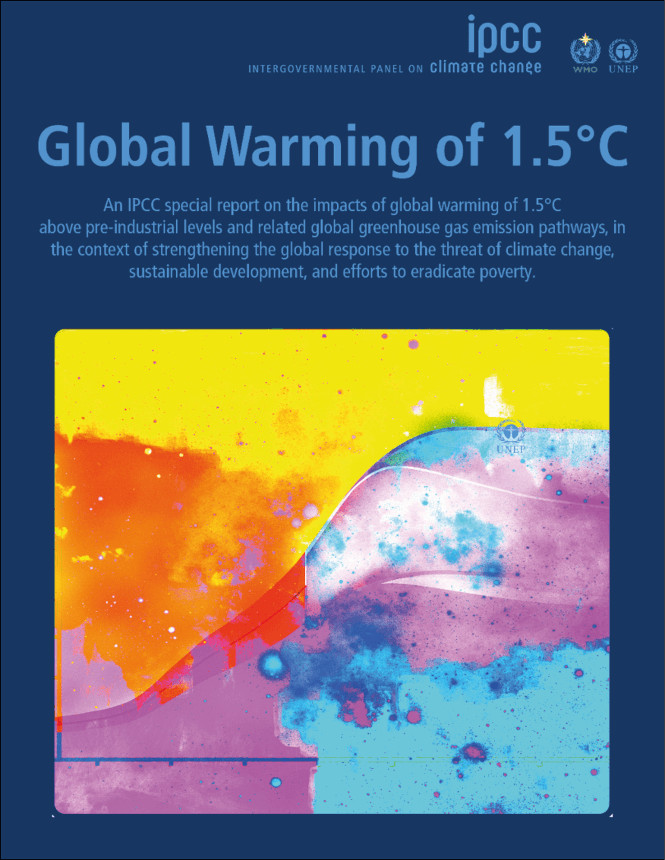
IPCC reports
Intergovernmental Panel on Climate Change (IPCC)
The most important and reliable scientific source about climate change.
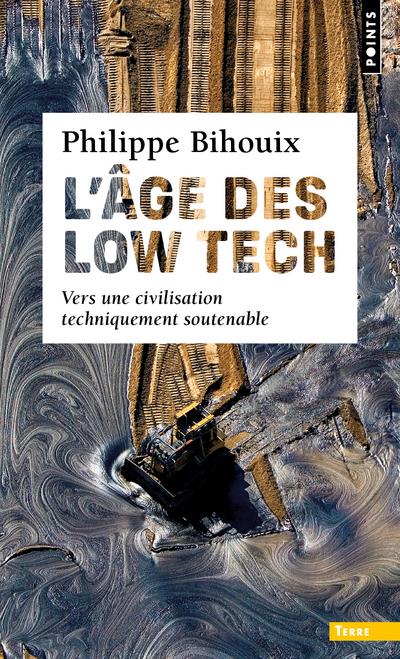
L'Age des Low Tech
Philippe Bihouix - 2014
A focus on the ressource part of the systemic concern in the Anthropocene in particular about metals and rare ressources used in our High Technologies.

L'Humanité en péril
Fred Vargas - 2019
Fred Vargas is mostly well-known for her crime novels however she wrote a transparent and really easy to read (even for neophytes) book about the systemic problems due to Anthropocene. The book is quite naive and its approach is sometimes confusing but it at least informs people about climate change, biodiversity destruction, energy and more.
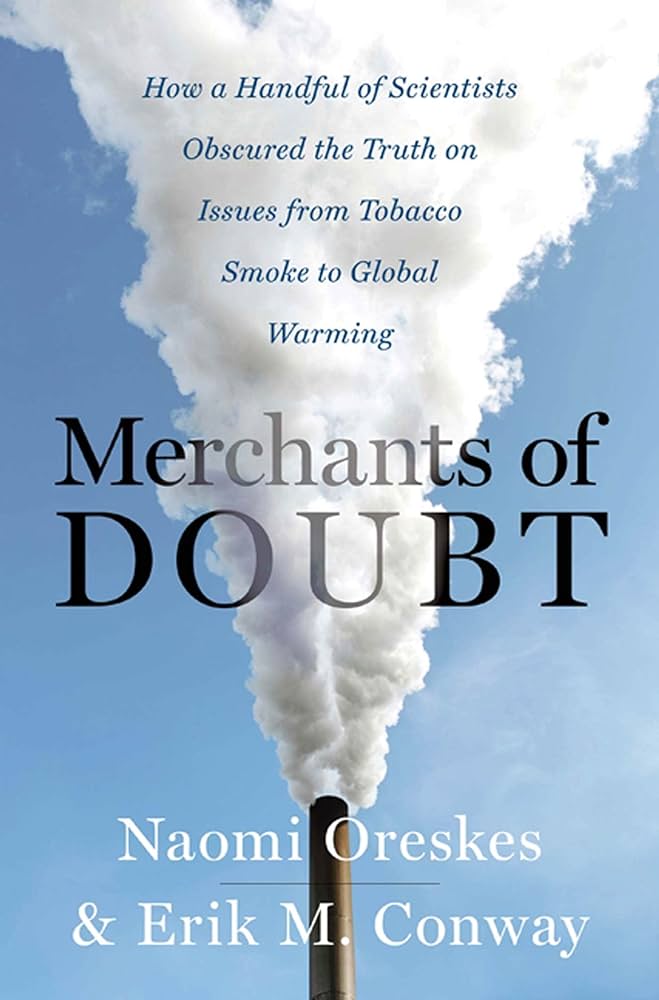
Merchants of Doubt
Naomi Oreskes & Erik M. Conway - 2015
How a Handful of Scientists Obscured the Truth on Issues from Tobacco Smoke to Global Warming.
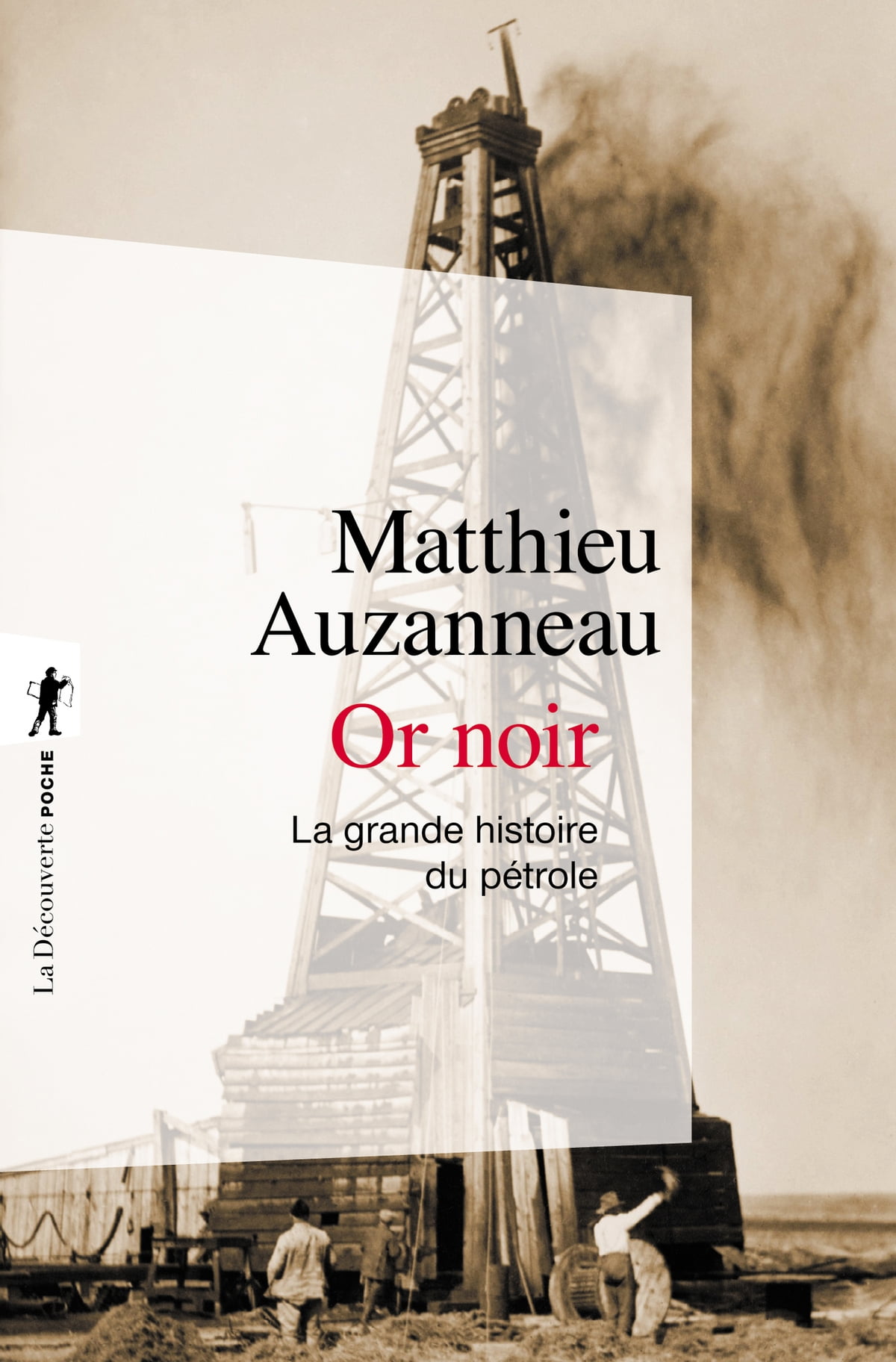
Or Noir
Matthieu Auzanneau - 2015
An essay about oil history, from its discovery to its importance in today’s civilization in all domains: industrial of course but also military, political and economical.
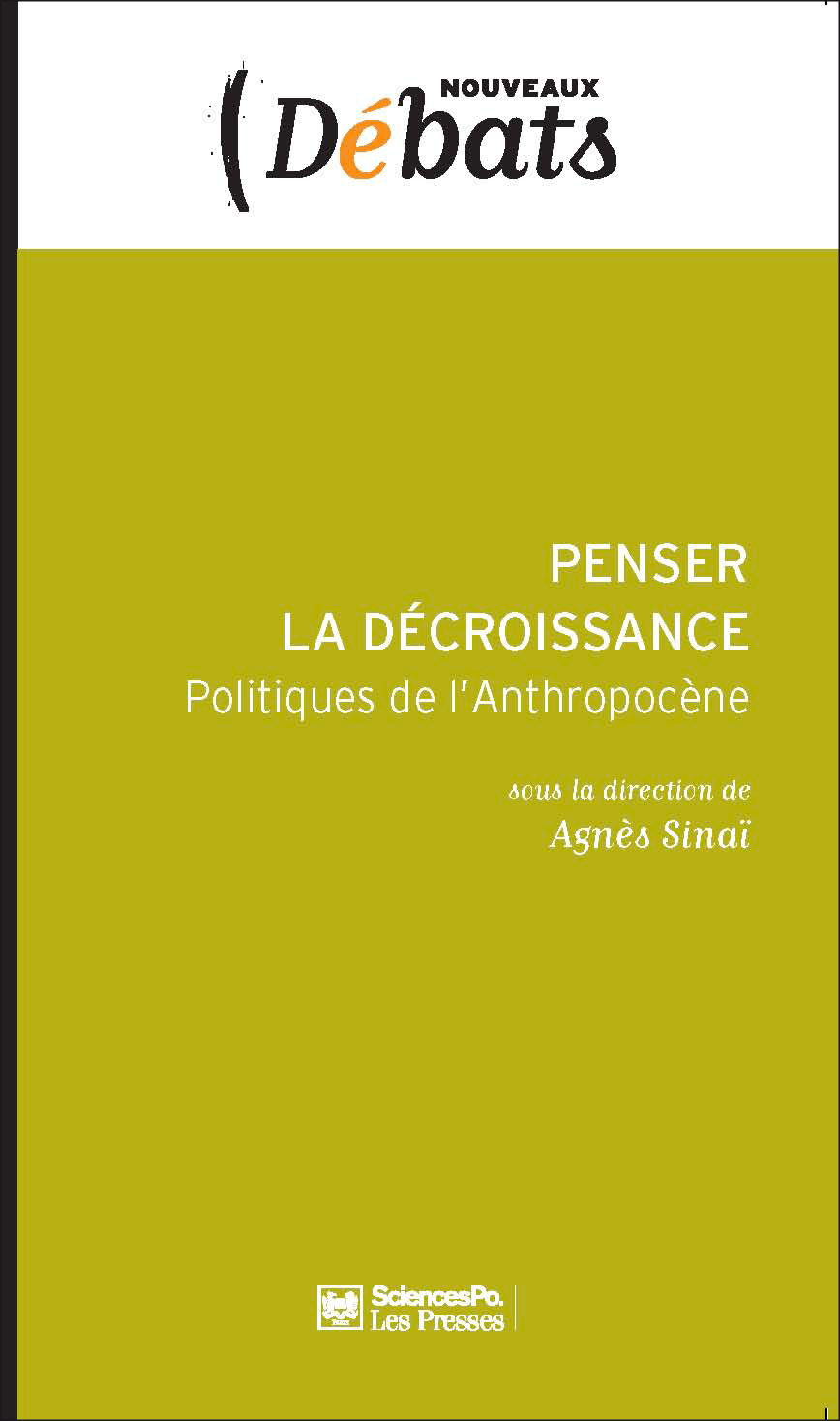
Penser la décroissance
Agnès Sinaï - 2013
A book written by different specialists where each has its own chapter. There are two books that follow after this one.

Planetary Boundaries
Science - 2023
Earth beyond six of nine planetary boundaries
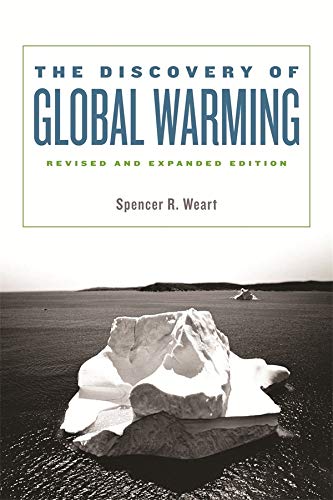
The Discovery of Global Warming
Spencer R. Weart - 2003
History about how Global Warming was discovered.
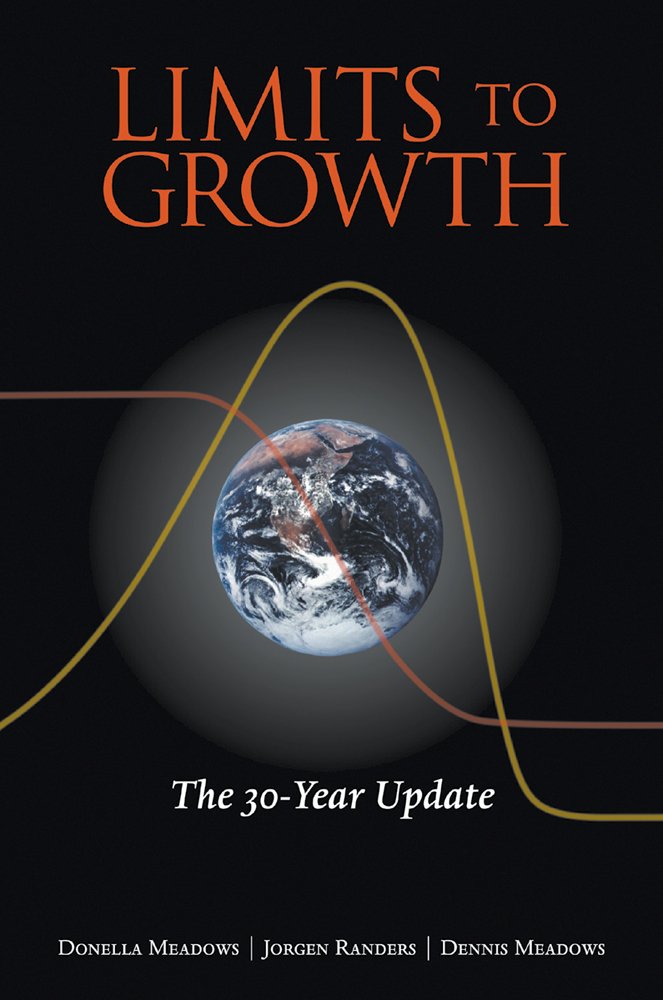
The Limits to Growth
Dennis Meadows, Donella Meadows and Jørgen Randers - 1972
A classic and a must-read. New editions have been published in 1992, 2004 and 2012.
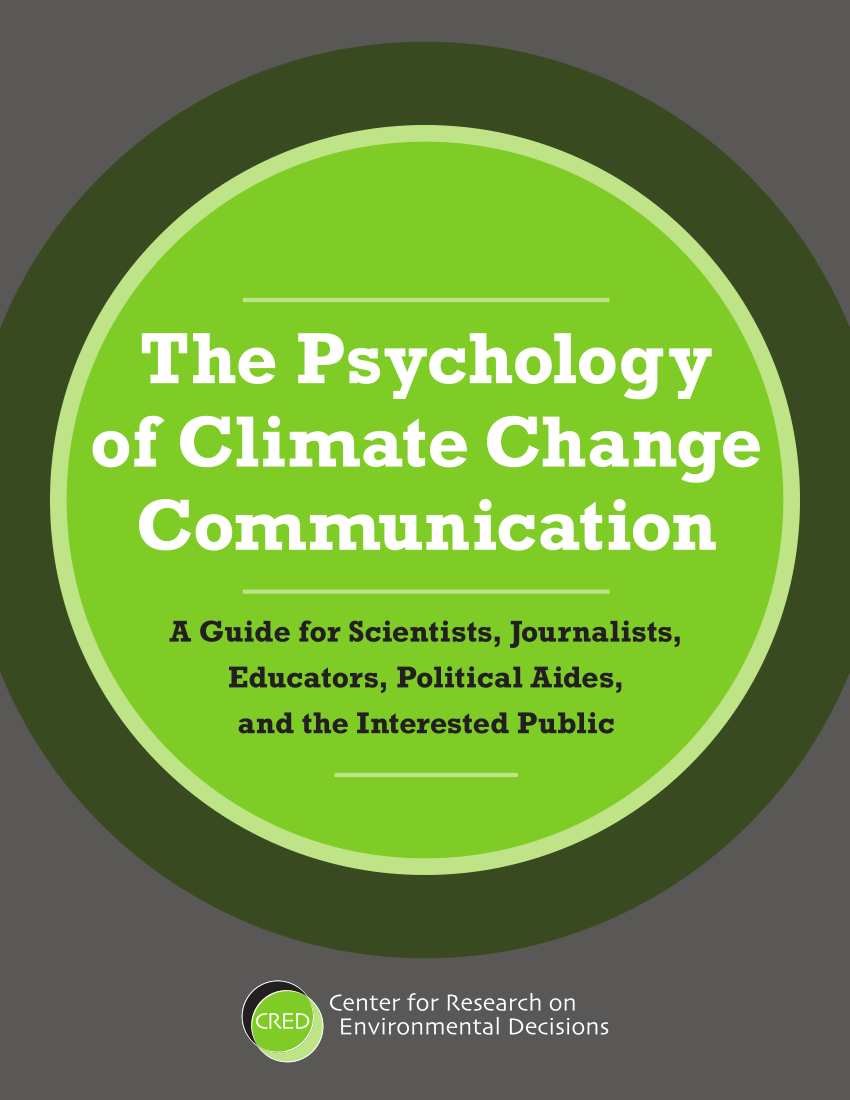
The Psychology of Climate Change Communication
Center for Research on Environmental Decisions - 2009
A great psychological guide for anybody interested in enhancing its communication skills about climate change and more.
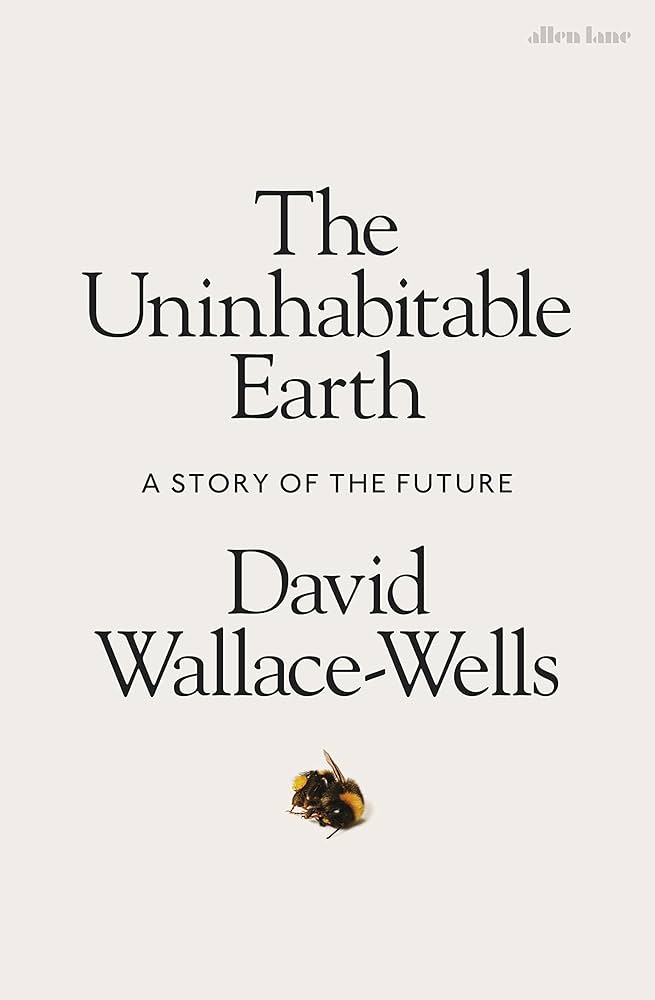
The Unhabitable Earth
David Wallace - 2019
The book explores various possibilities for Earth’s future across a spectrum of predicted future temperature ranges. Wallace-Wells’ argues that even with active intervention, the effects of climate change will have catastrophic impacts across multiple spheres.
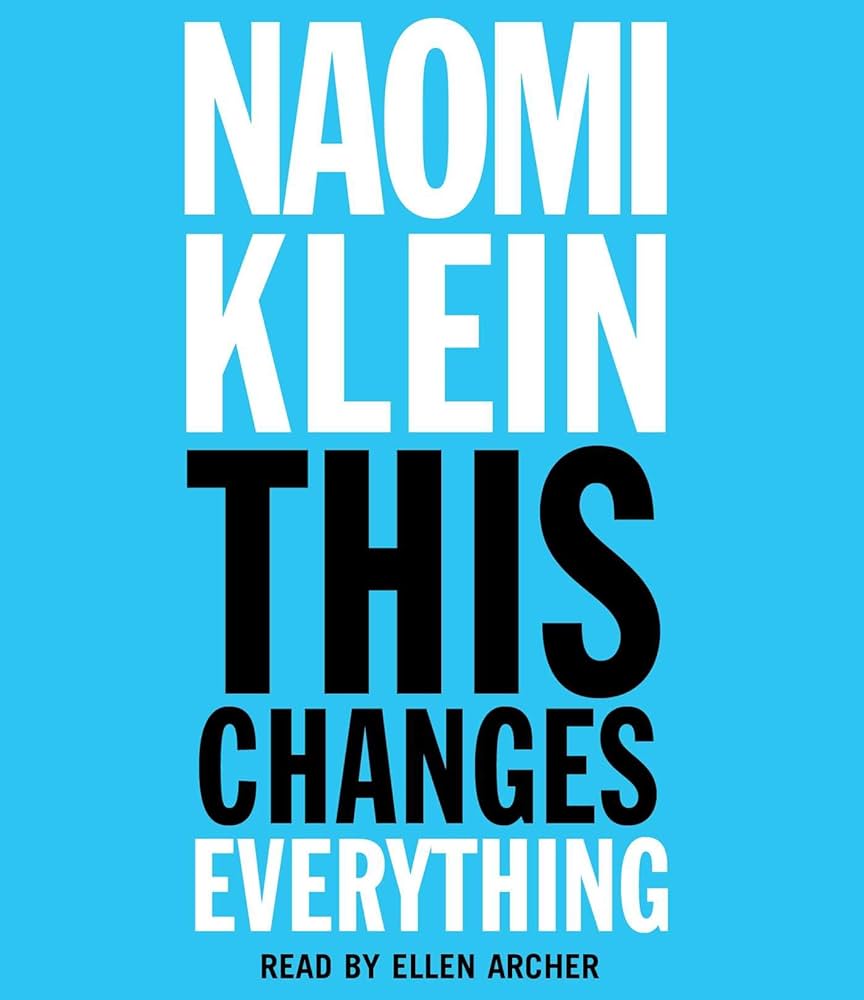
This Changes Everything
Naomi Klein - 2014
This is a must-read in order to understand the systemic causes and consequences in the Anthropocene.
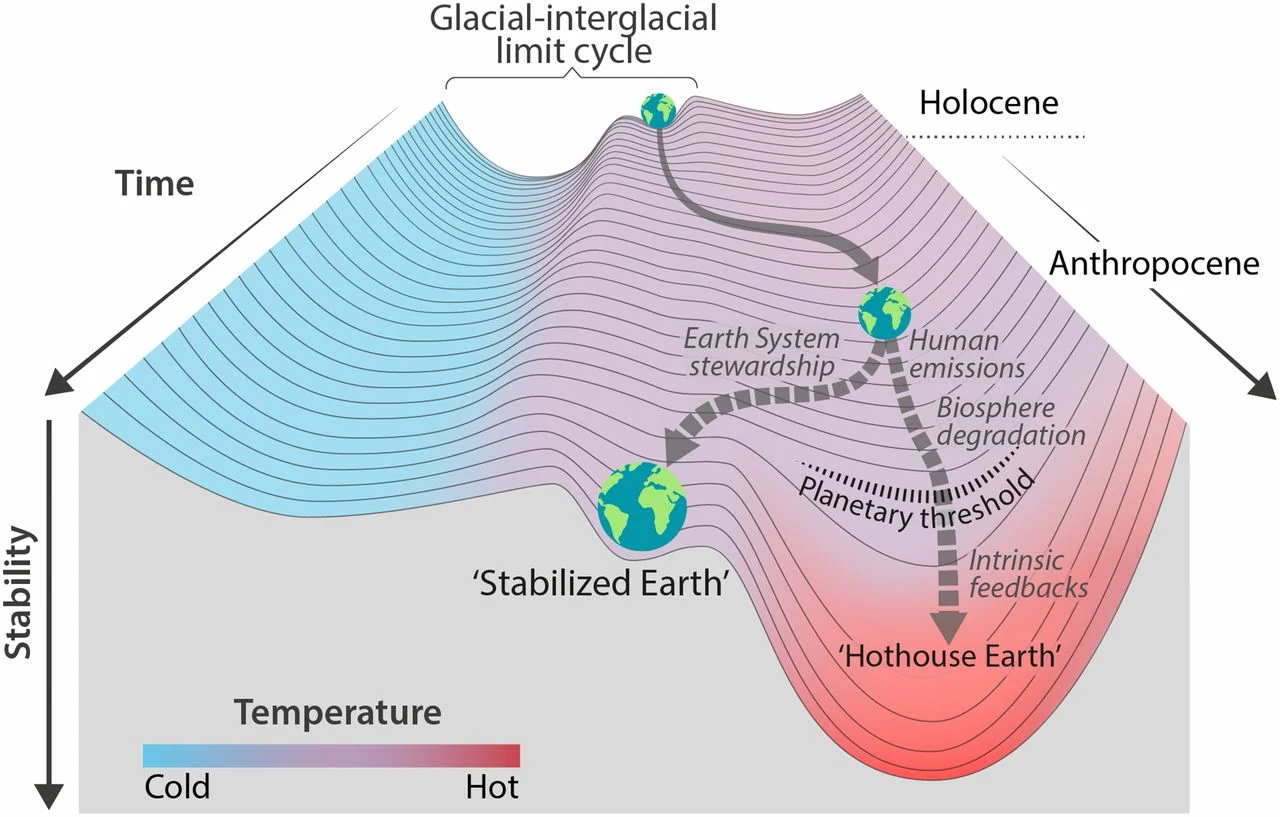
Trajectories of the Earth System
Proceedings of the National academy of Sciences - 2018
We explore the risk that self-reinforcing feedbacks could push the Earth System toward a planetary threshold that, if crossed, could prevent stabilization of the climate at intermediate temperature rises and cause continued warming on a “Hothouse Earth” pathway even as human emissions are reduced.

Why Climat Change does not Scare Us Yet ?
Center for Research on Environmental Decisions - 2006
A psychological approach to answer the question : Why Climate Change does not scare us yet ?
Videos
Watching films, series, documentaries, conferences is another way to learn more about the systemic concern. I would rather suggest conferences as the content is more transparent, the exchange more human and overall the content is more factual and not catastrophic.
“A clever person solves a problem. A wise person avoids it.” - Albert Einstein
Conferences & Interviews
Documentaries
Films & Series
Actions
“Never deny the power of a small group of committed individuals to change the world. Indeed that is the only thing that ever has.” - Margaret Mead

Blast, Independent media
Different actions to consider
Click here and watch a video that gathers some examples of actions to take.

Climate Fresk
Teach others about Climate Change
Like lots of people and I, you can become a facilitator to animate workshops on climate change!
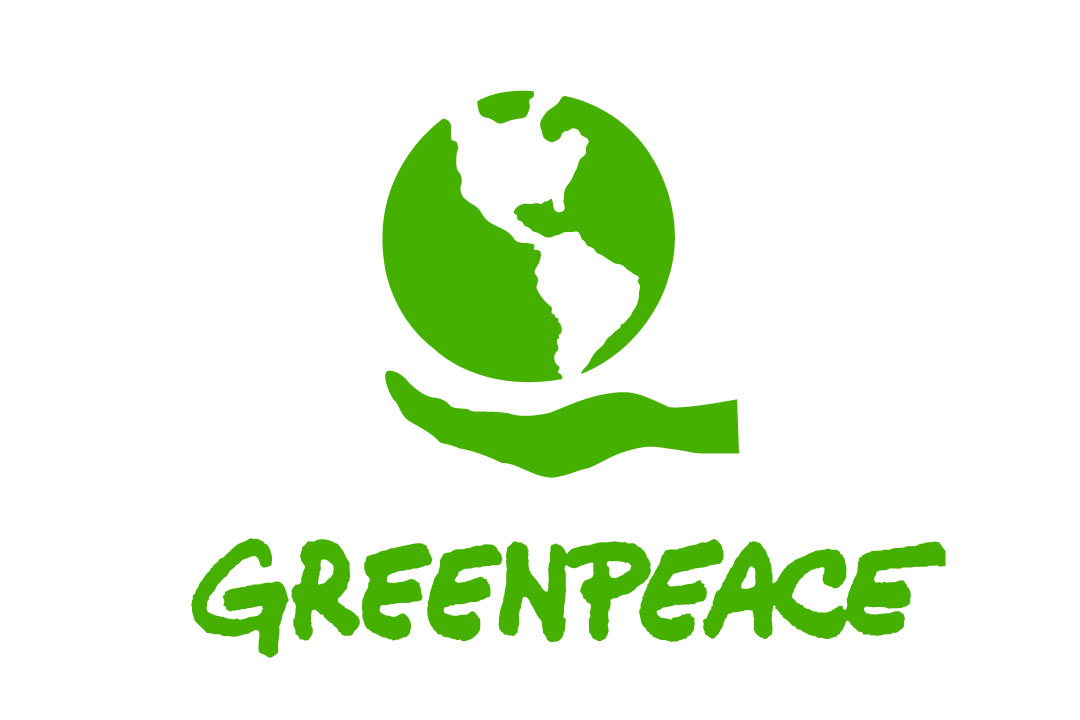
Greenpeace
Donate to or Join an International NGO
Greenpeace is a network of independent organisations, which uses peaceful, creative confrontation to expose global environmental problems, and develop solutions for a green and peaceful future.
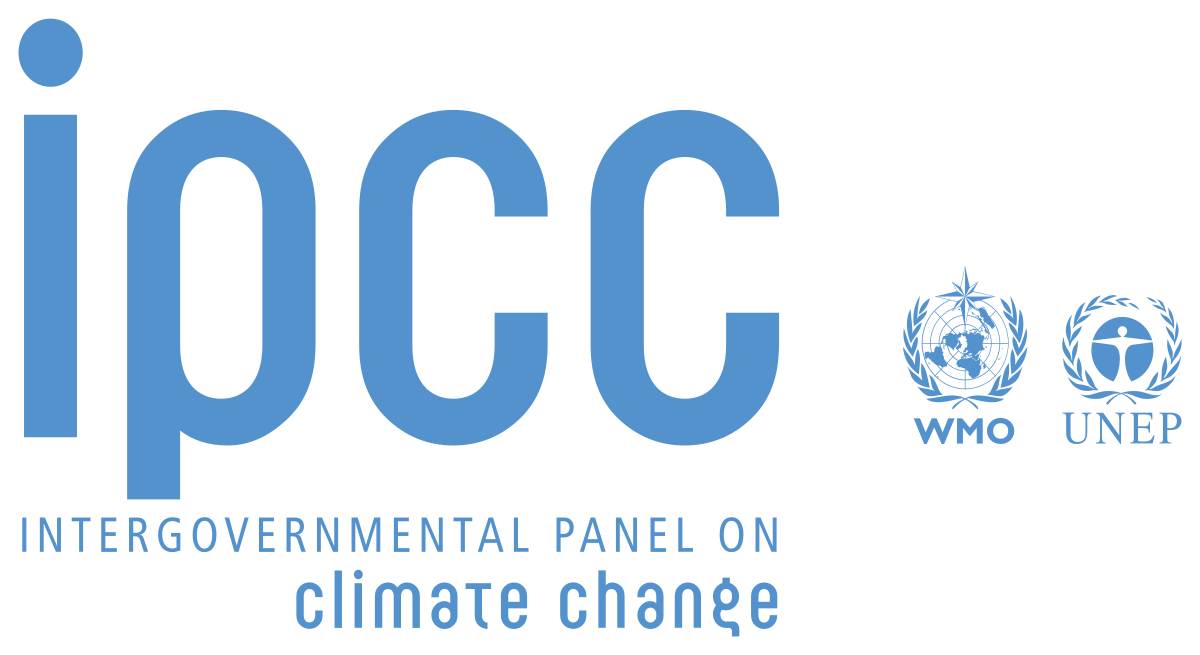
IPCC
Participate in the work of the IPCC
Hundreds of experts in different fields volunteer their time and expertise to produce IPCC reports. Thousands more contribute to the review process and to the literature and other knowledge that are assessed in IPCC reports. These scientists are not paid by the IPCC.

Momentum Institute
Donate or engage for resilience
The main purpose of this association is to assemble contributors around the issues of transition, degrowth and resilience.
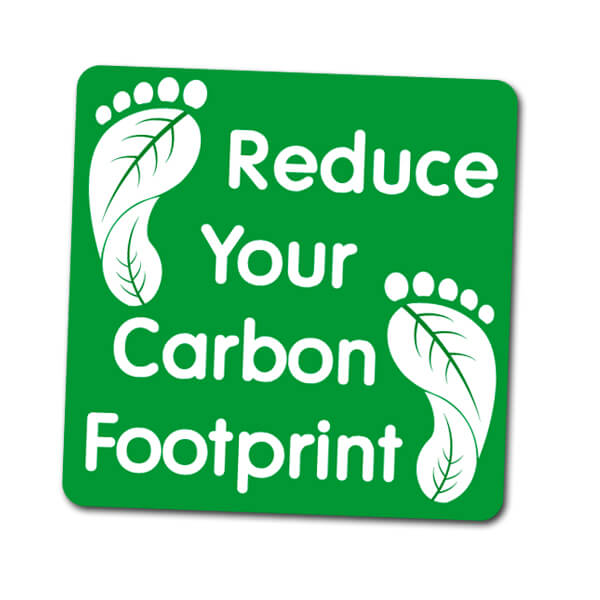
Reduce your carbon footprint
Calculate your footprint first
Currently the french mean is around 10t CO2 per year but let’s reach 2t CO2 per year !
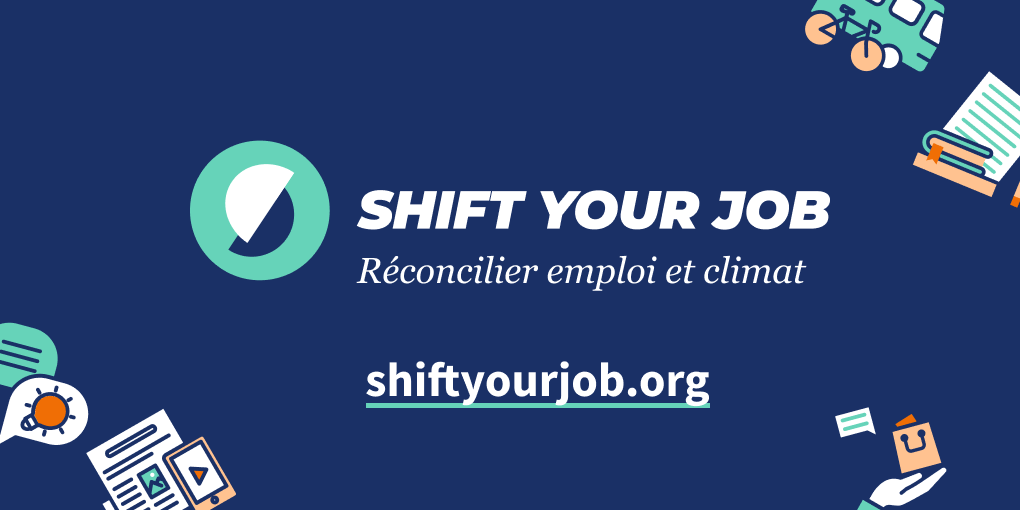
Shift your job
Play a role for change
A way to see what job could have an direct or indirect impact on the revolution and that fits you.

World Wide Fund for Nature
Donate to or Join an International NGO
As the world’s leading conservation organization, WWF works in nearly 100 countries to tackle the most pressing issues at the intersection of nature, people, and climate.